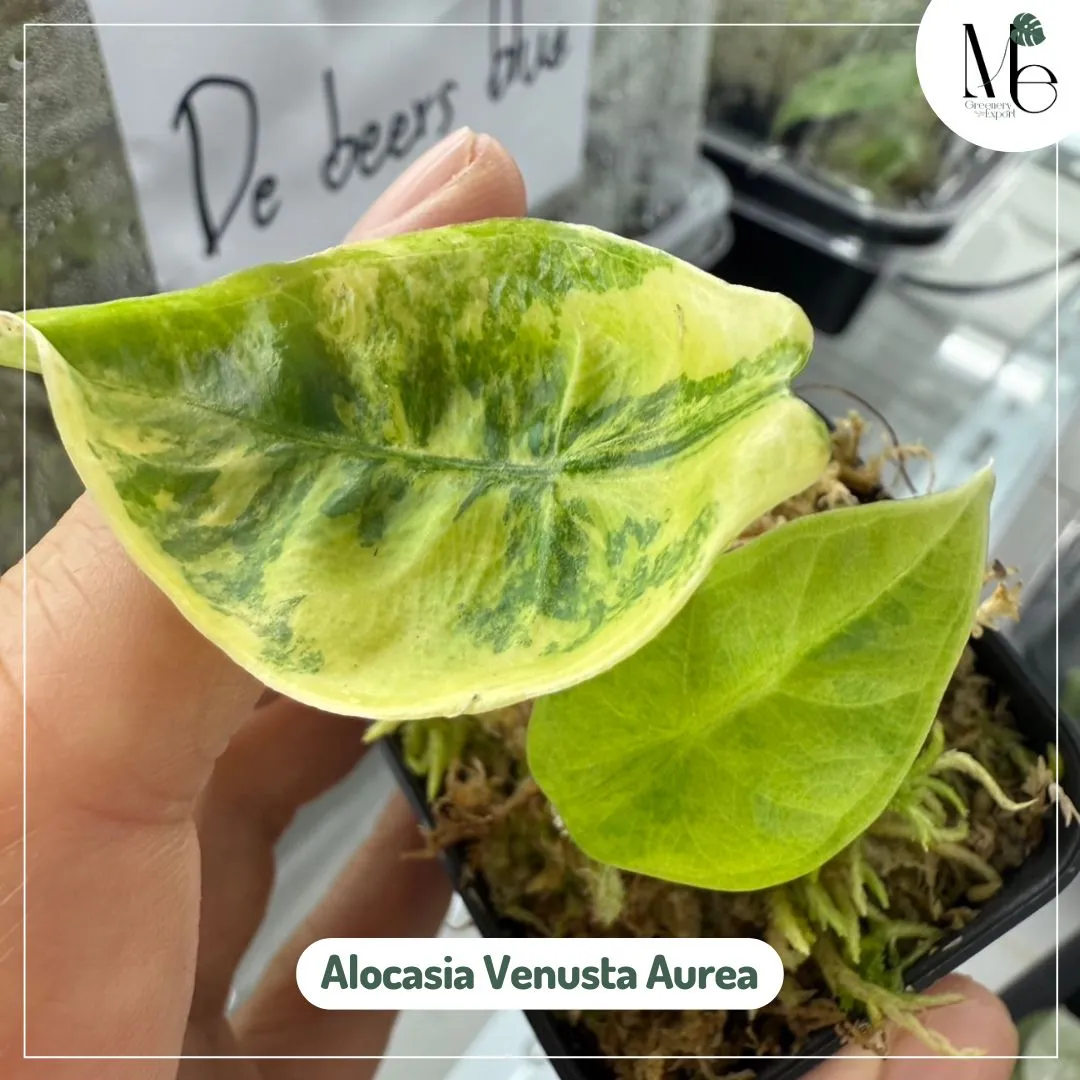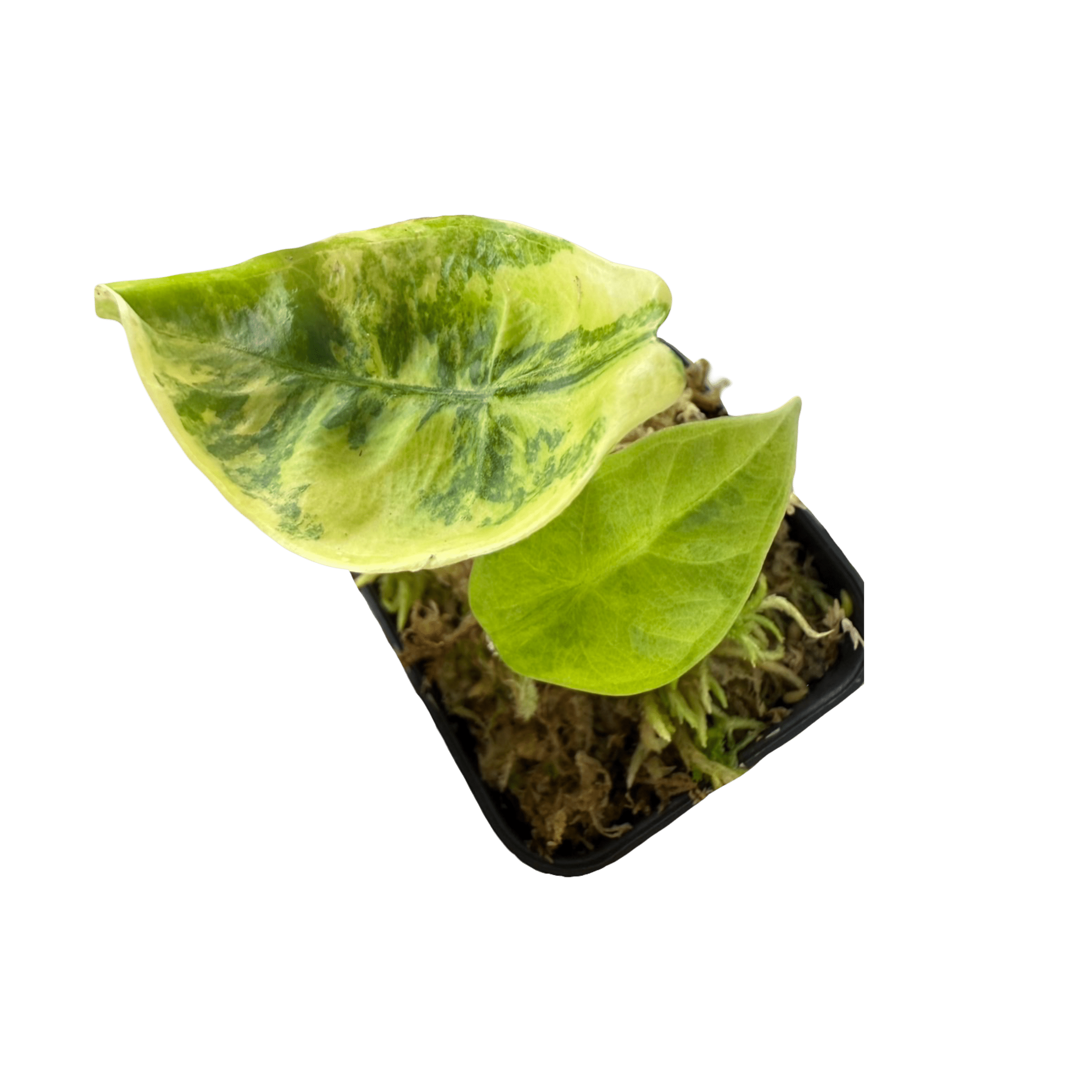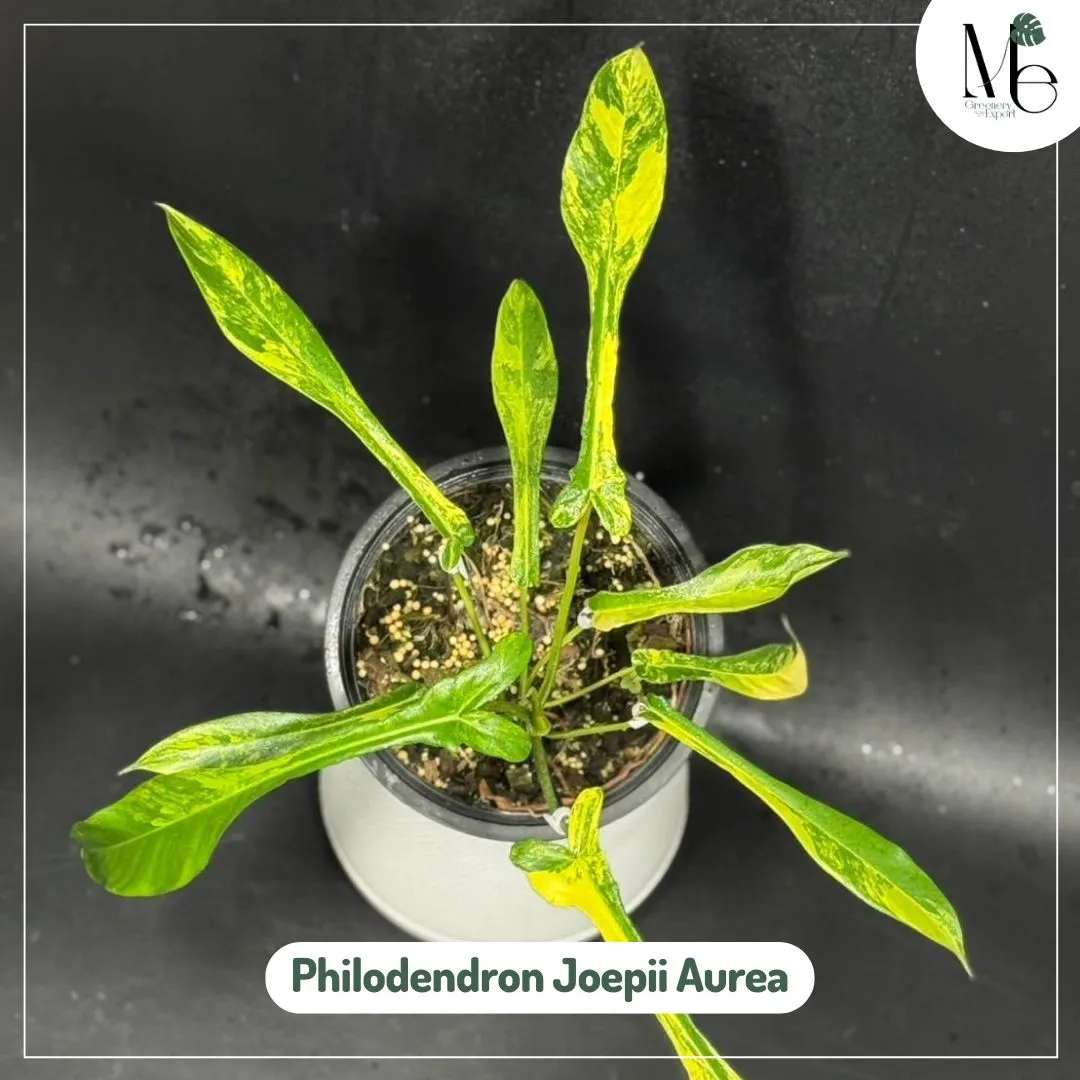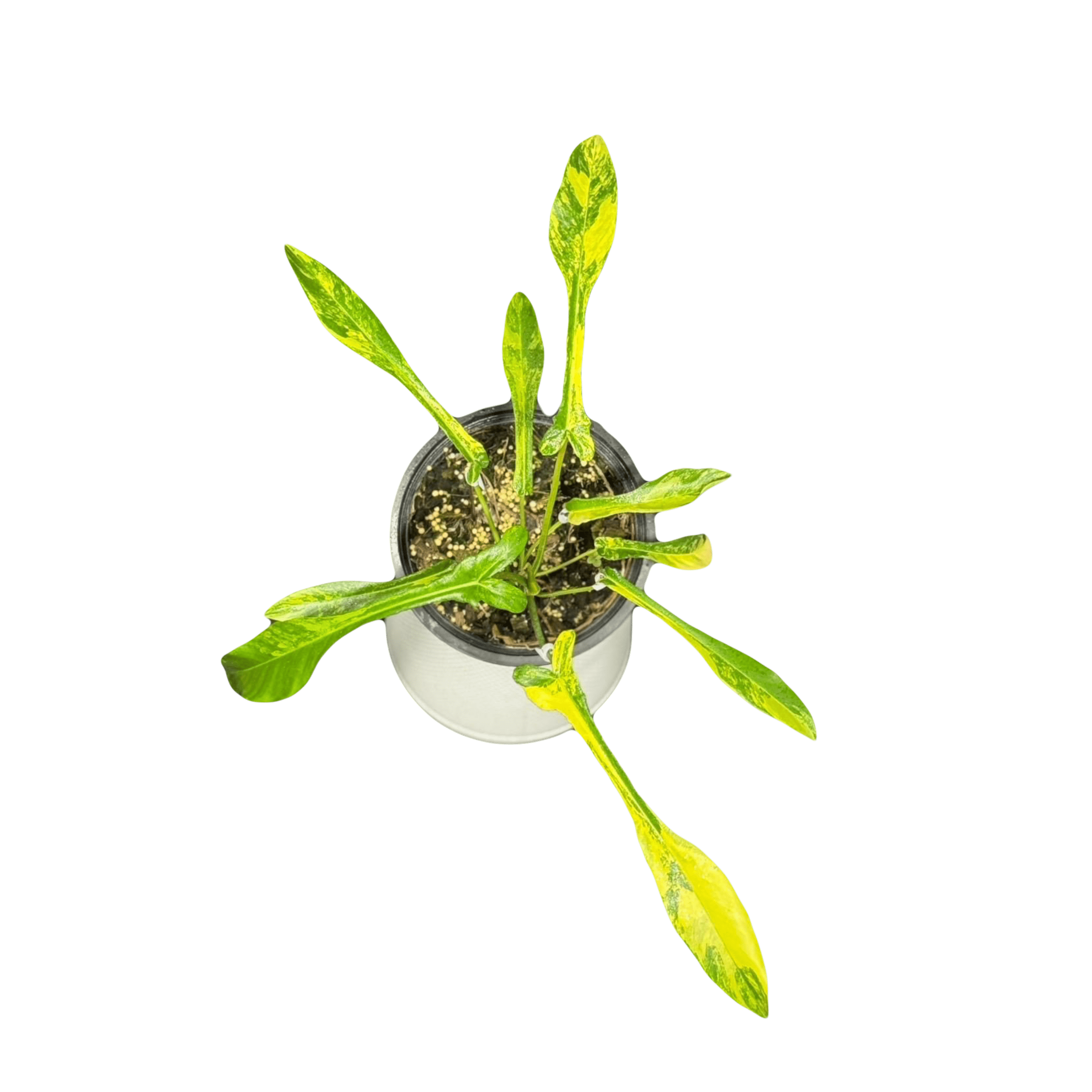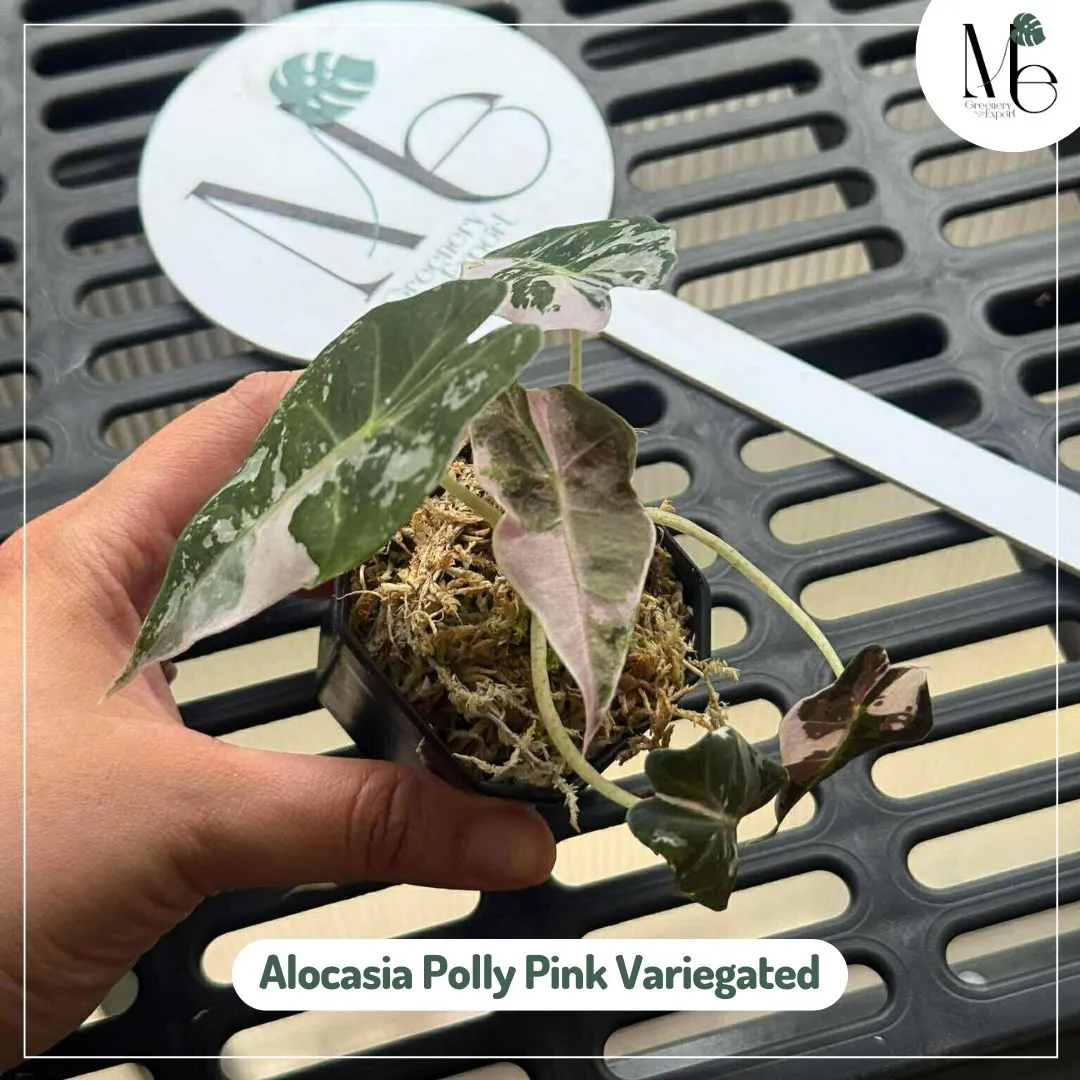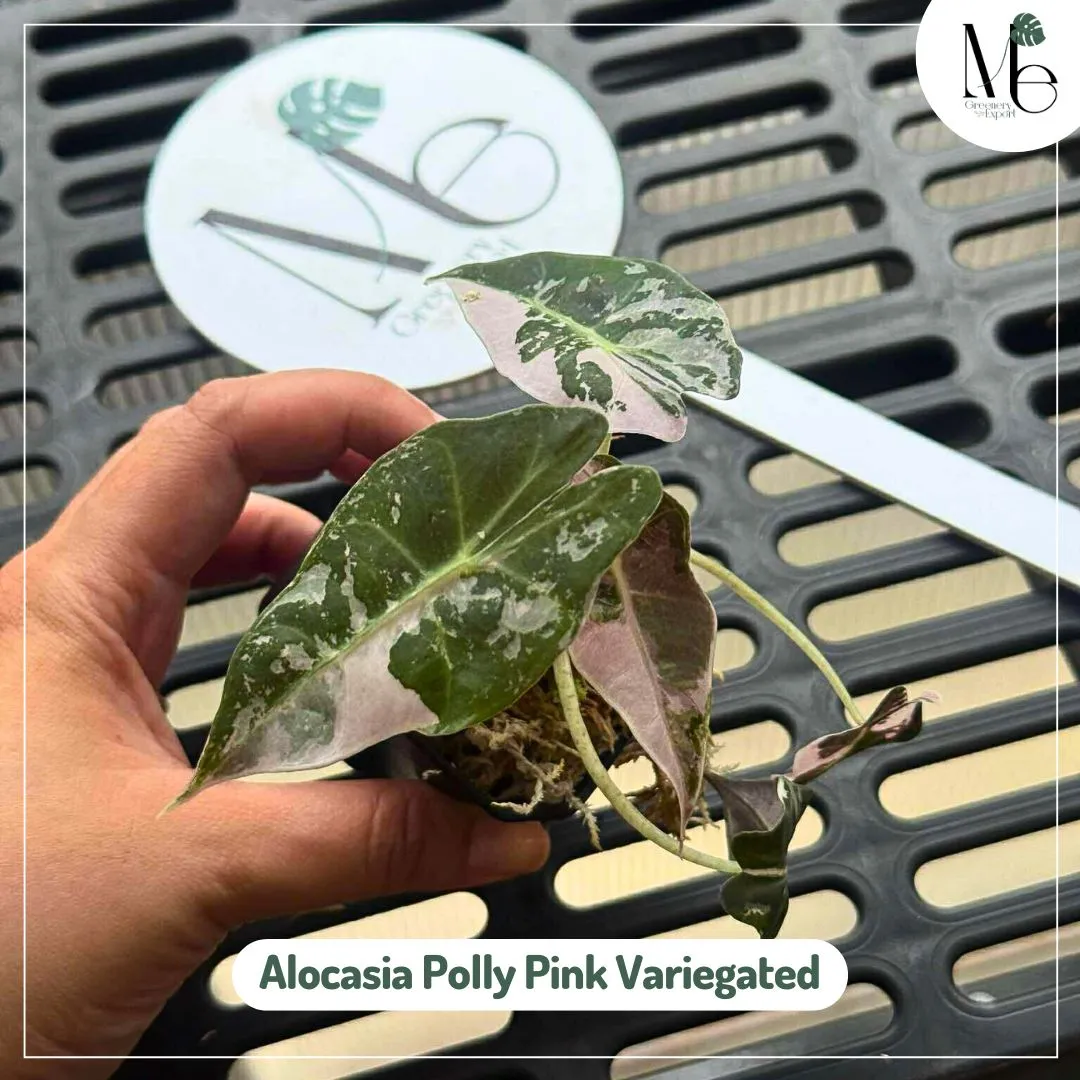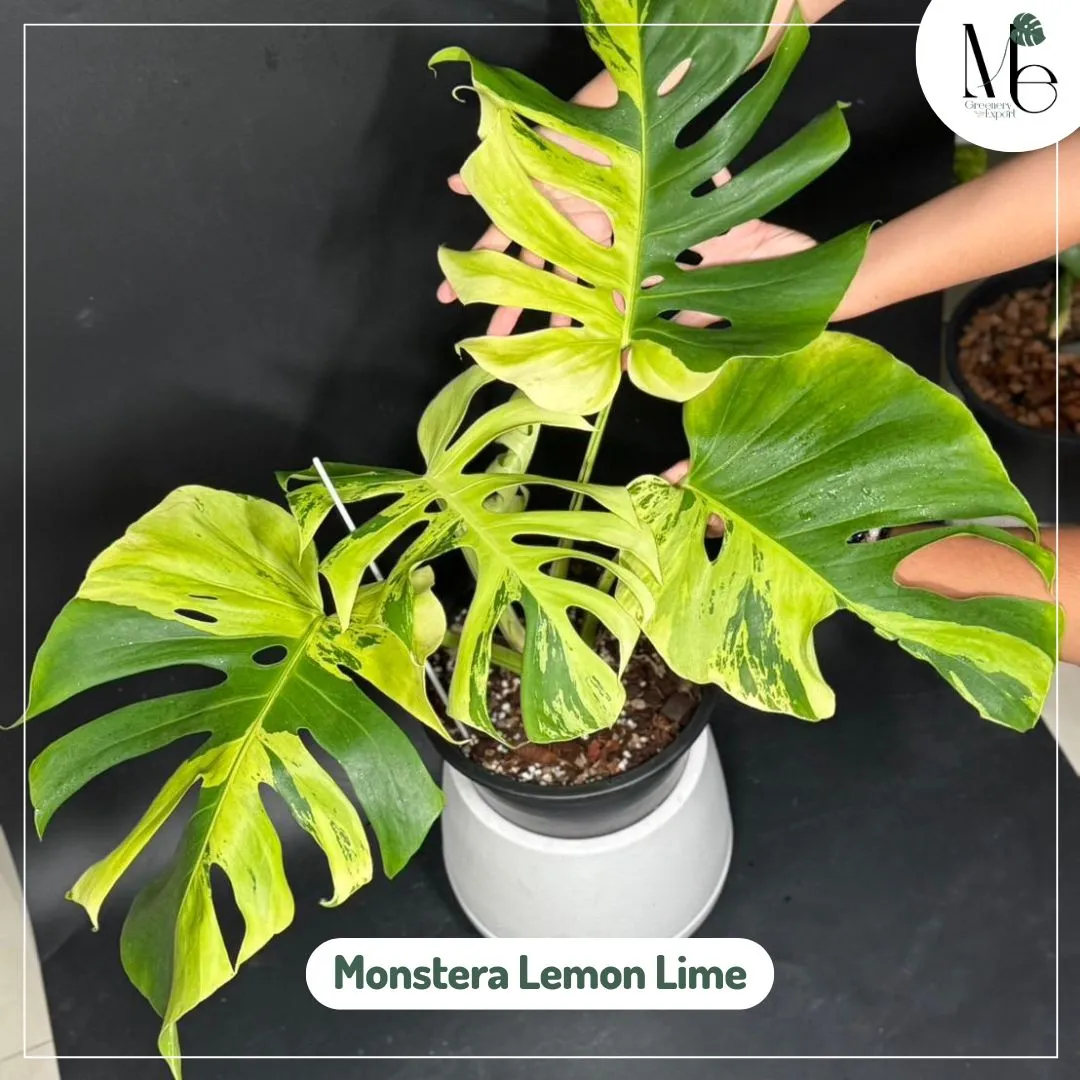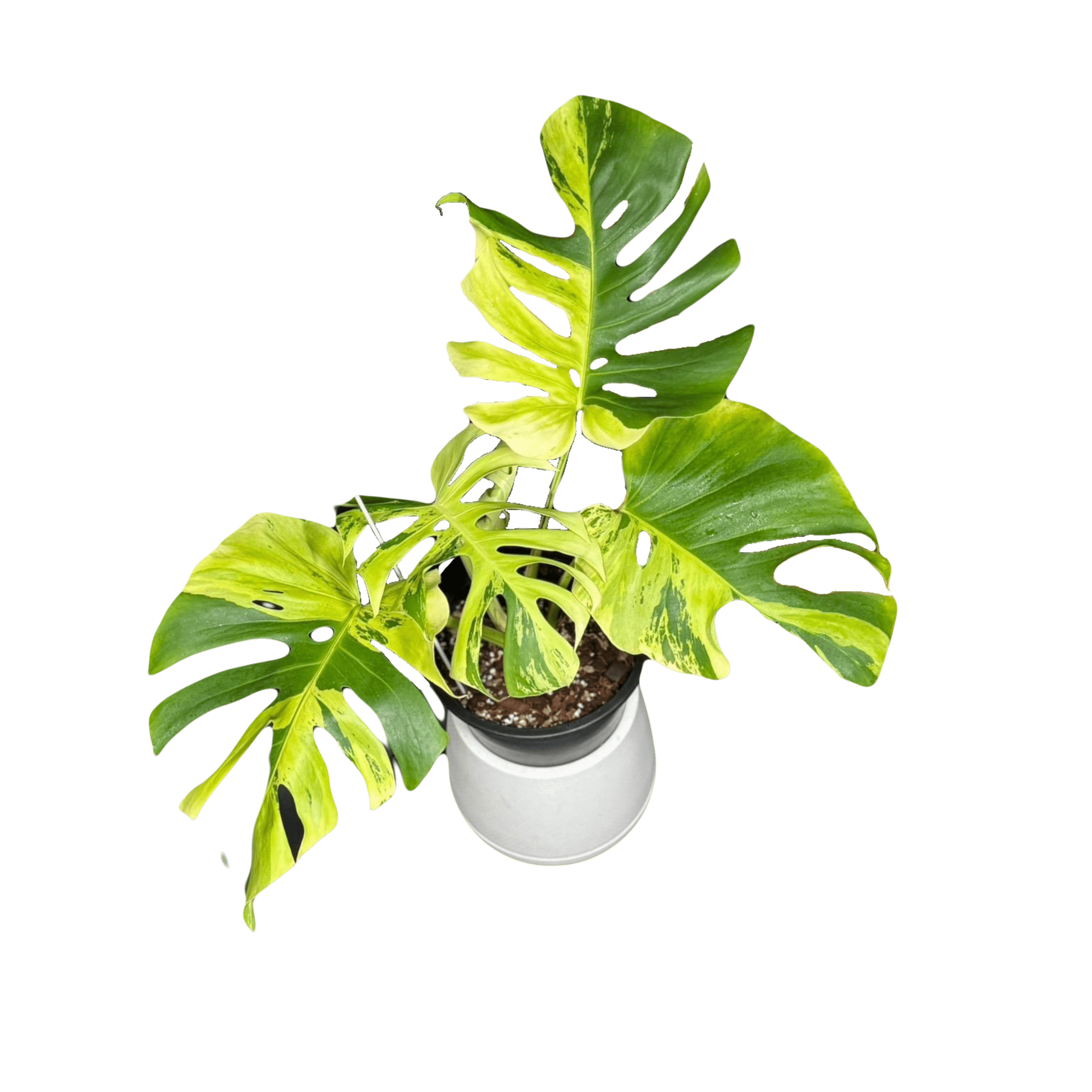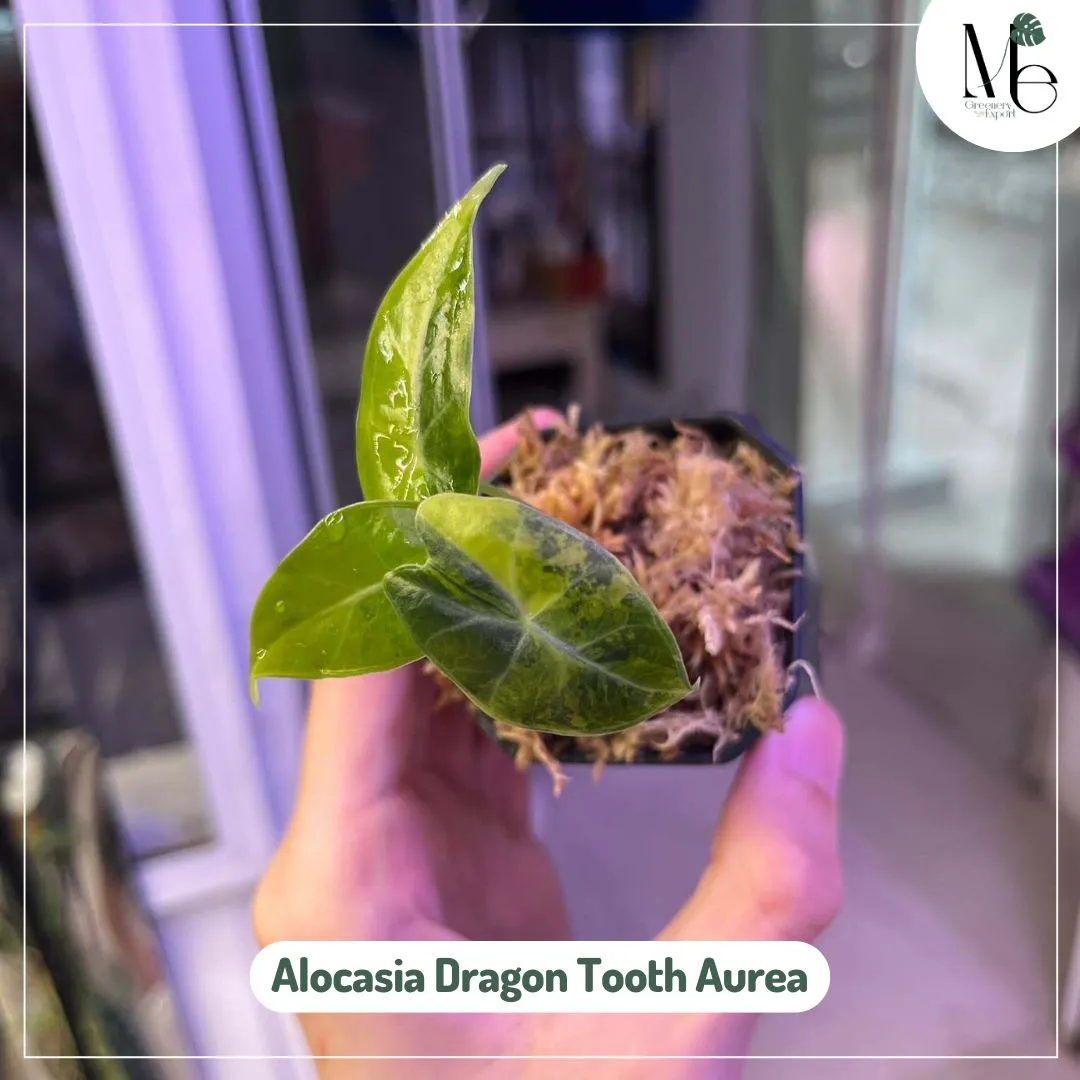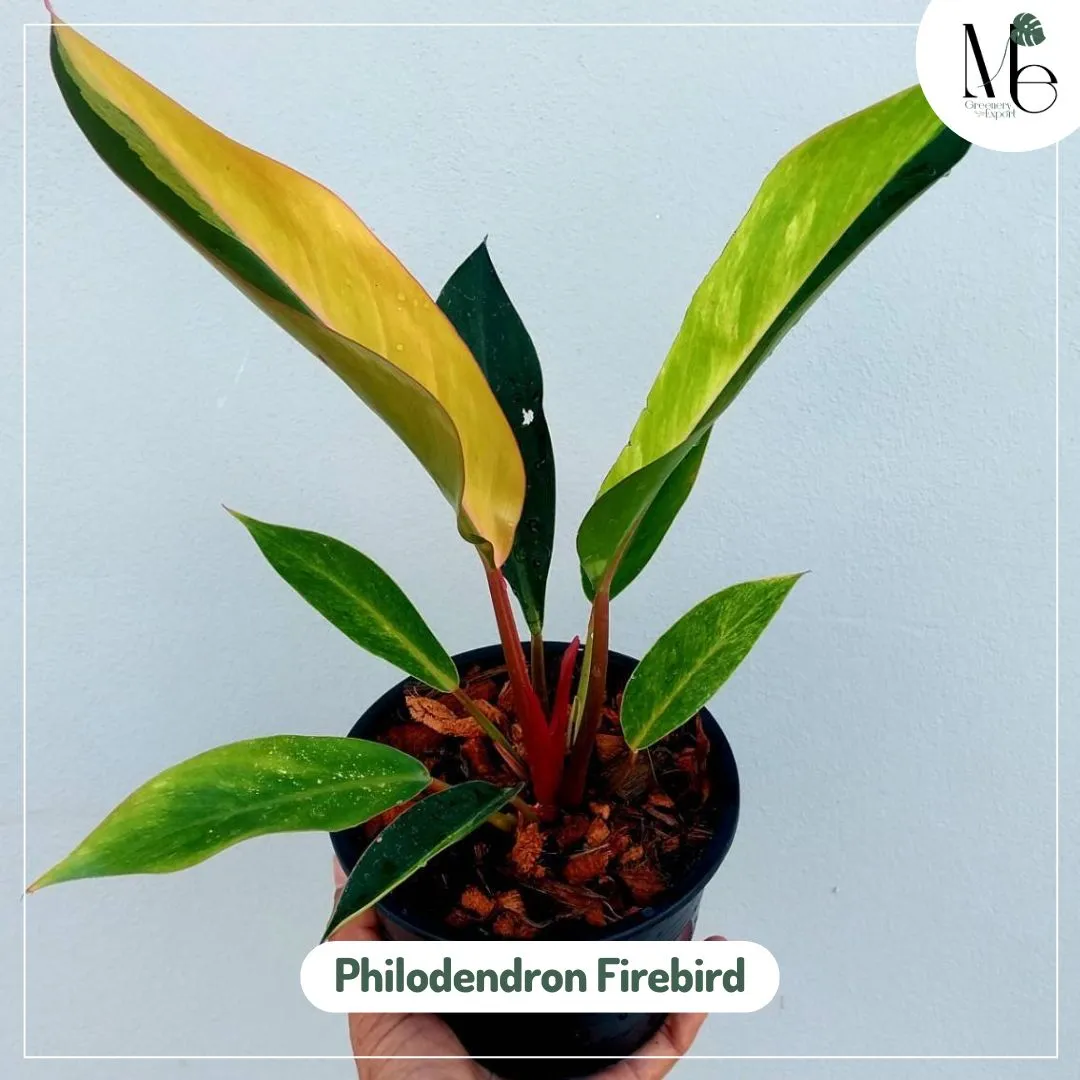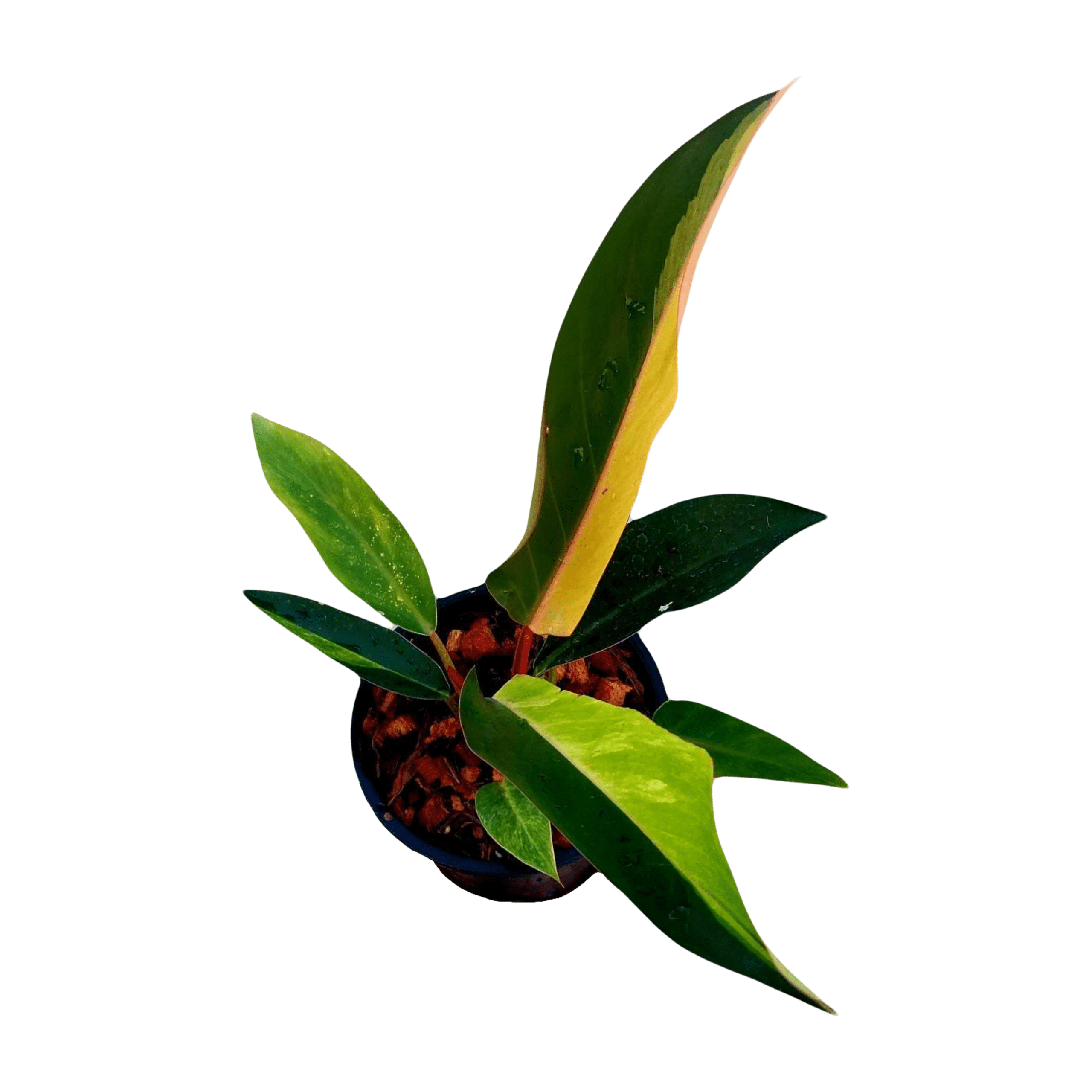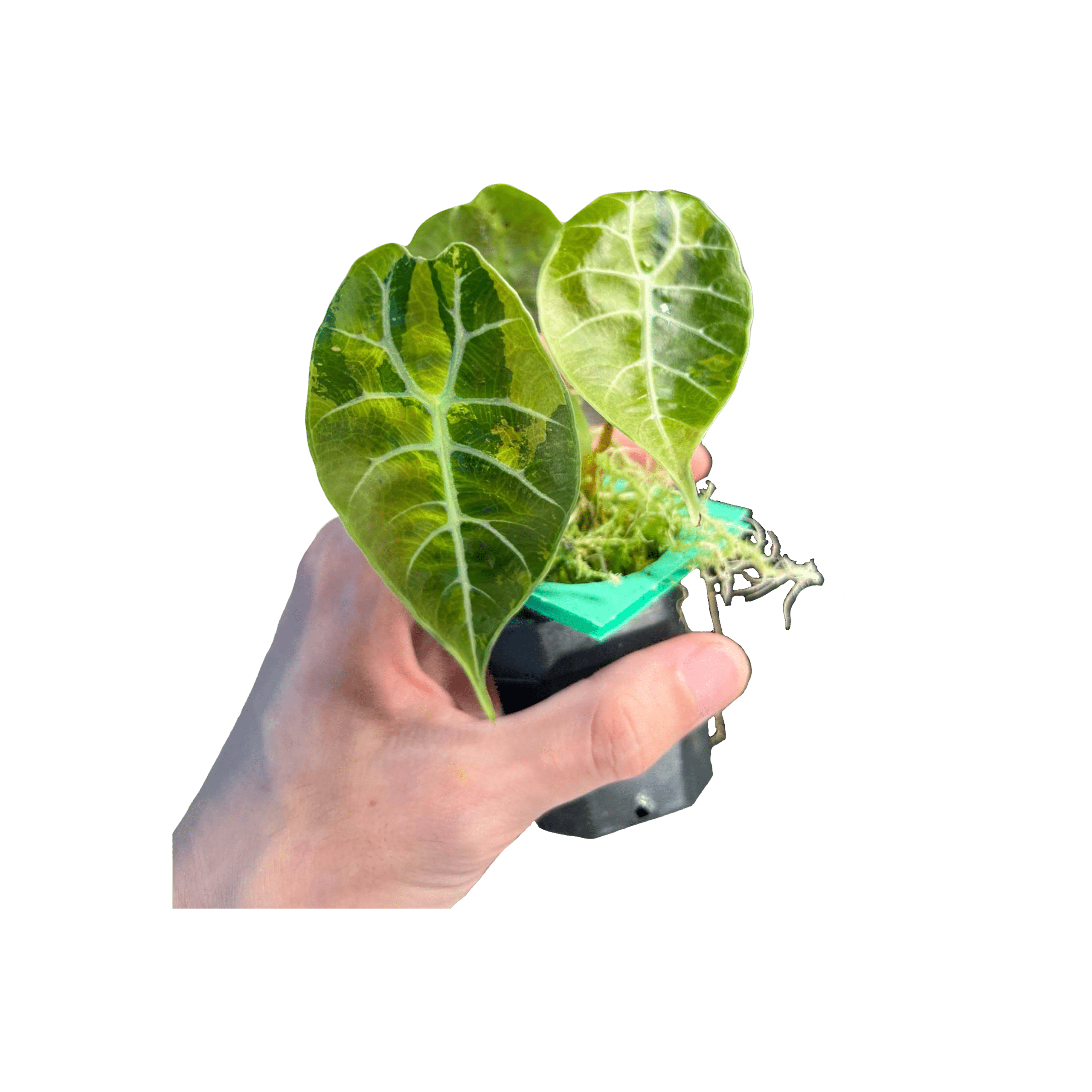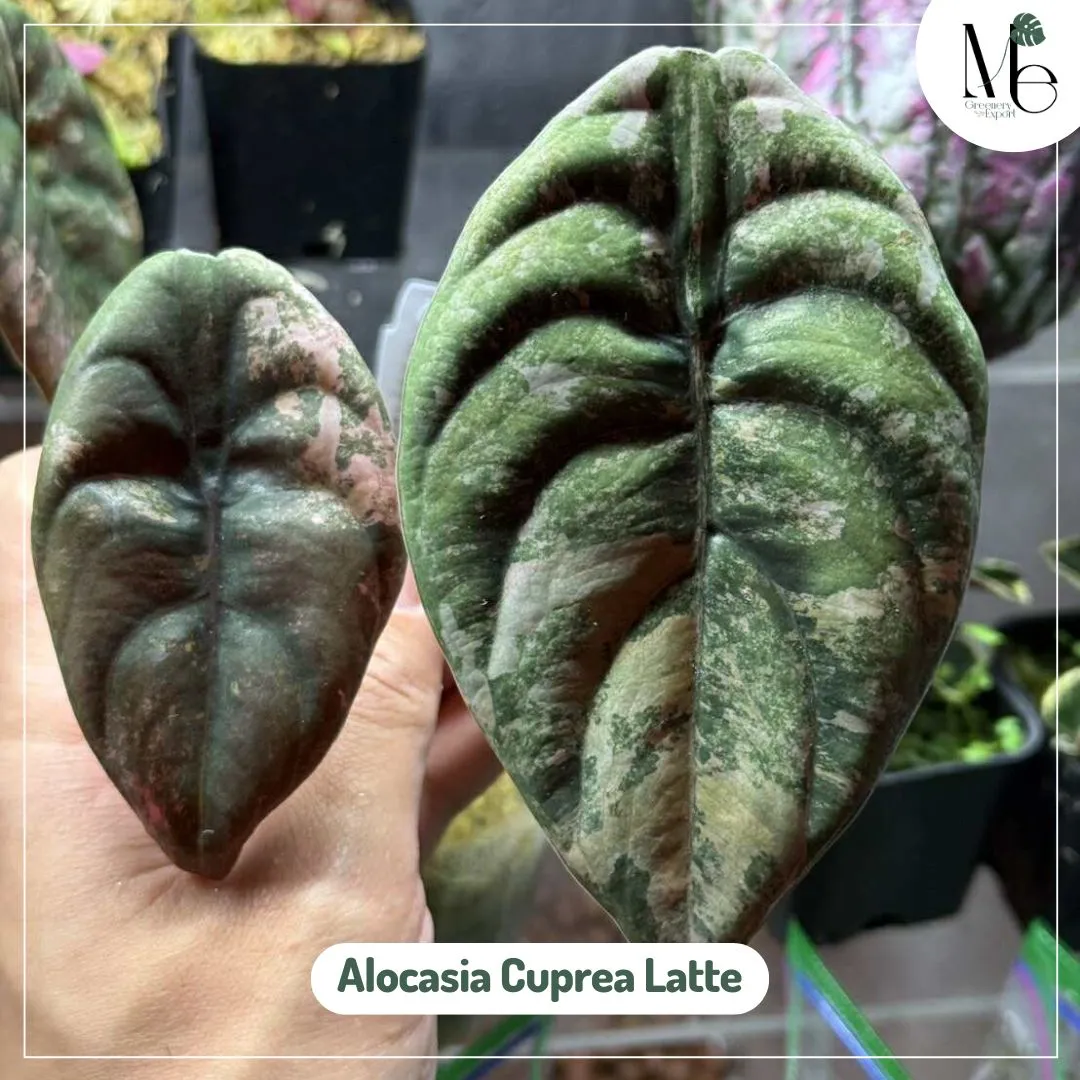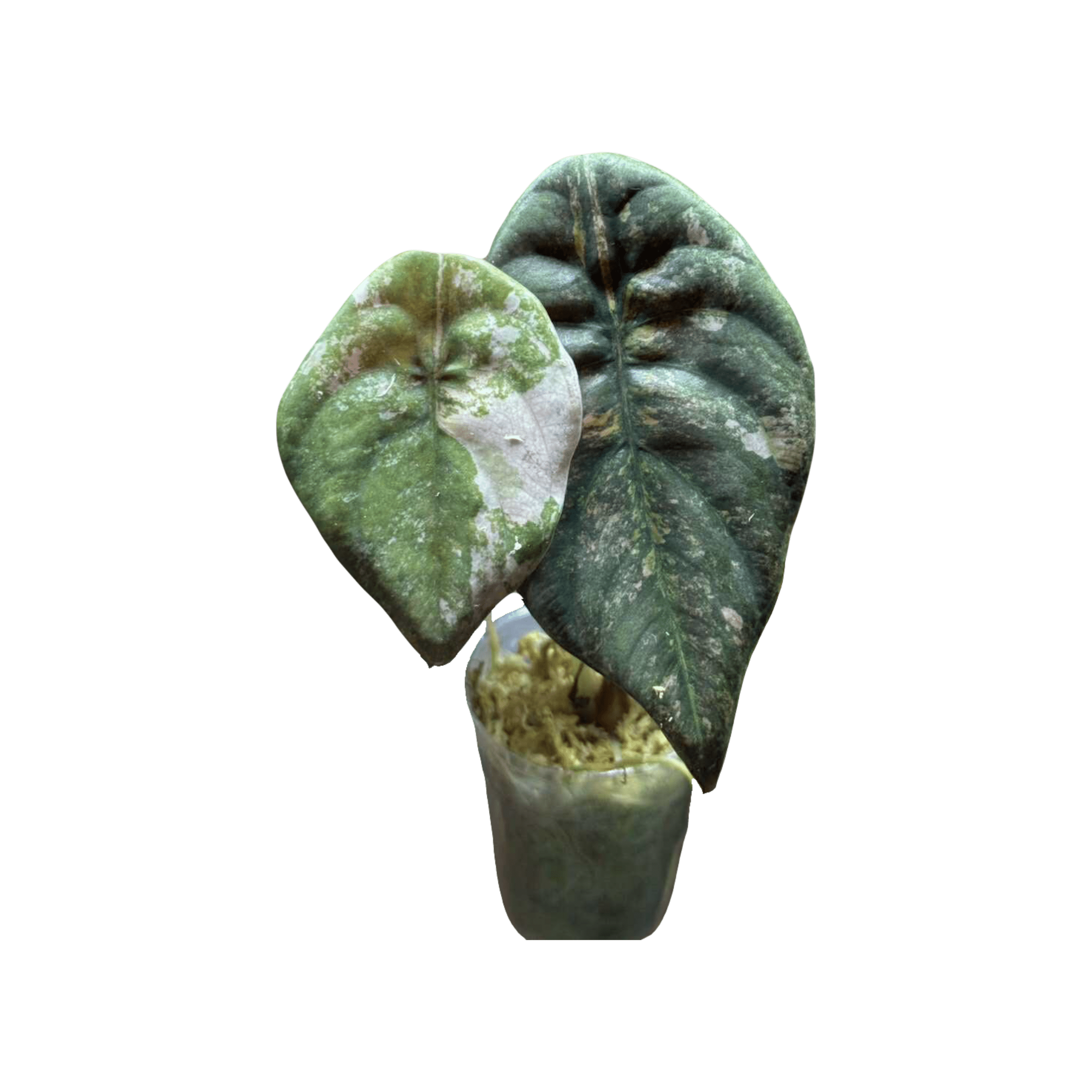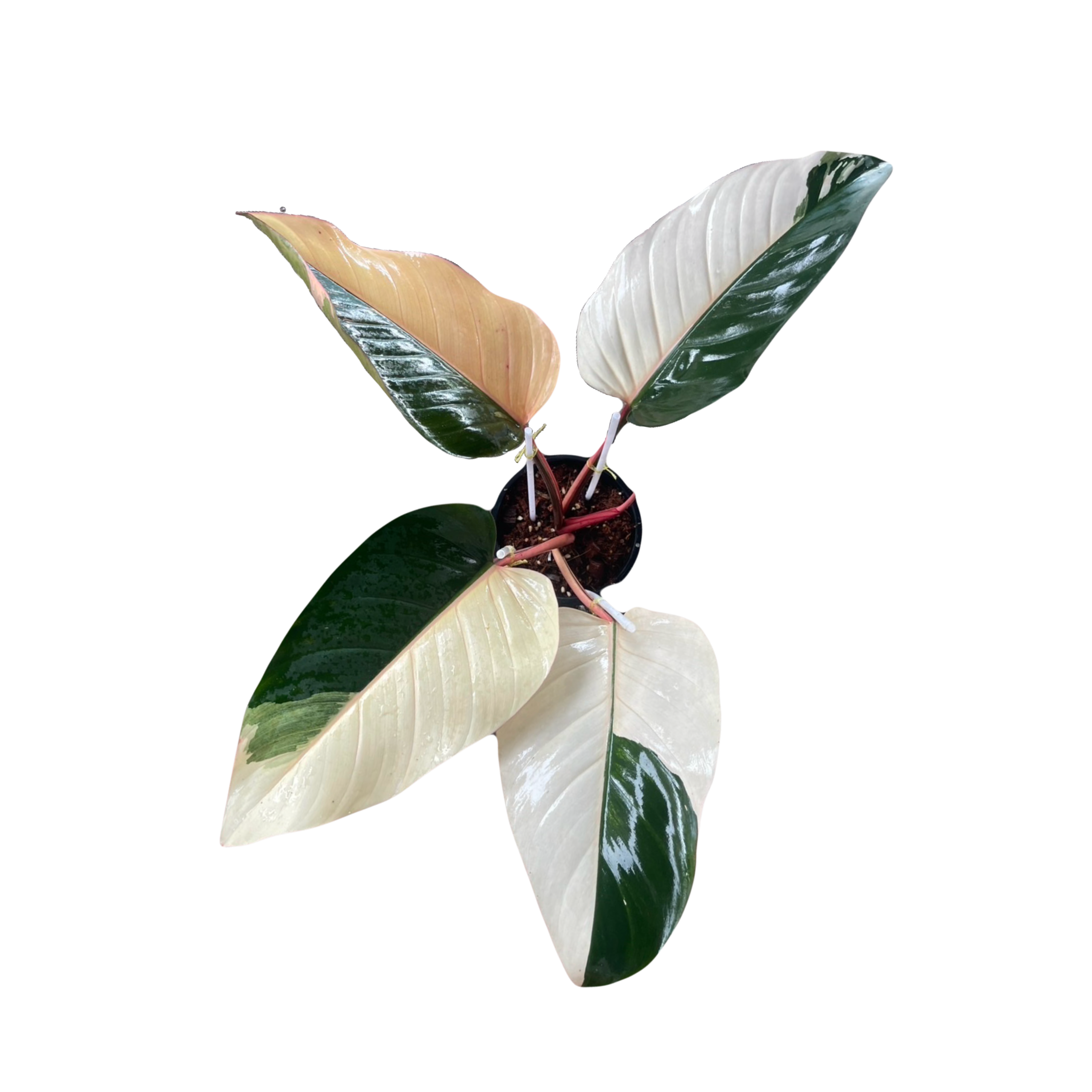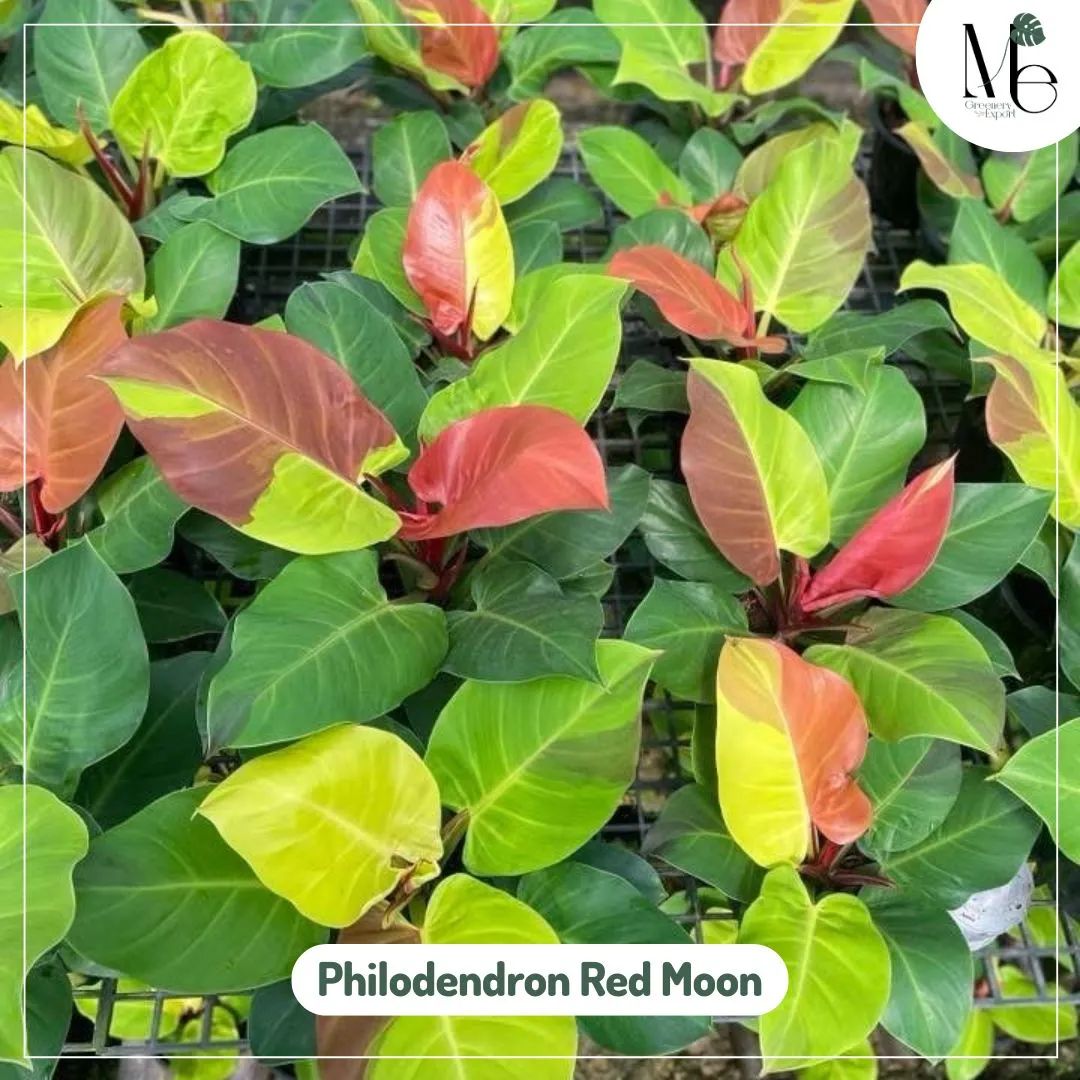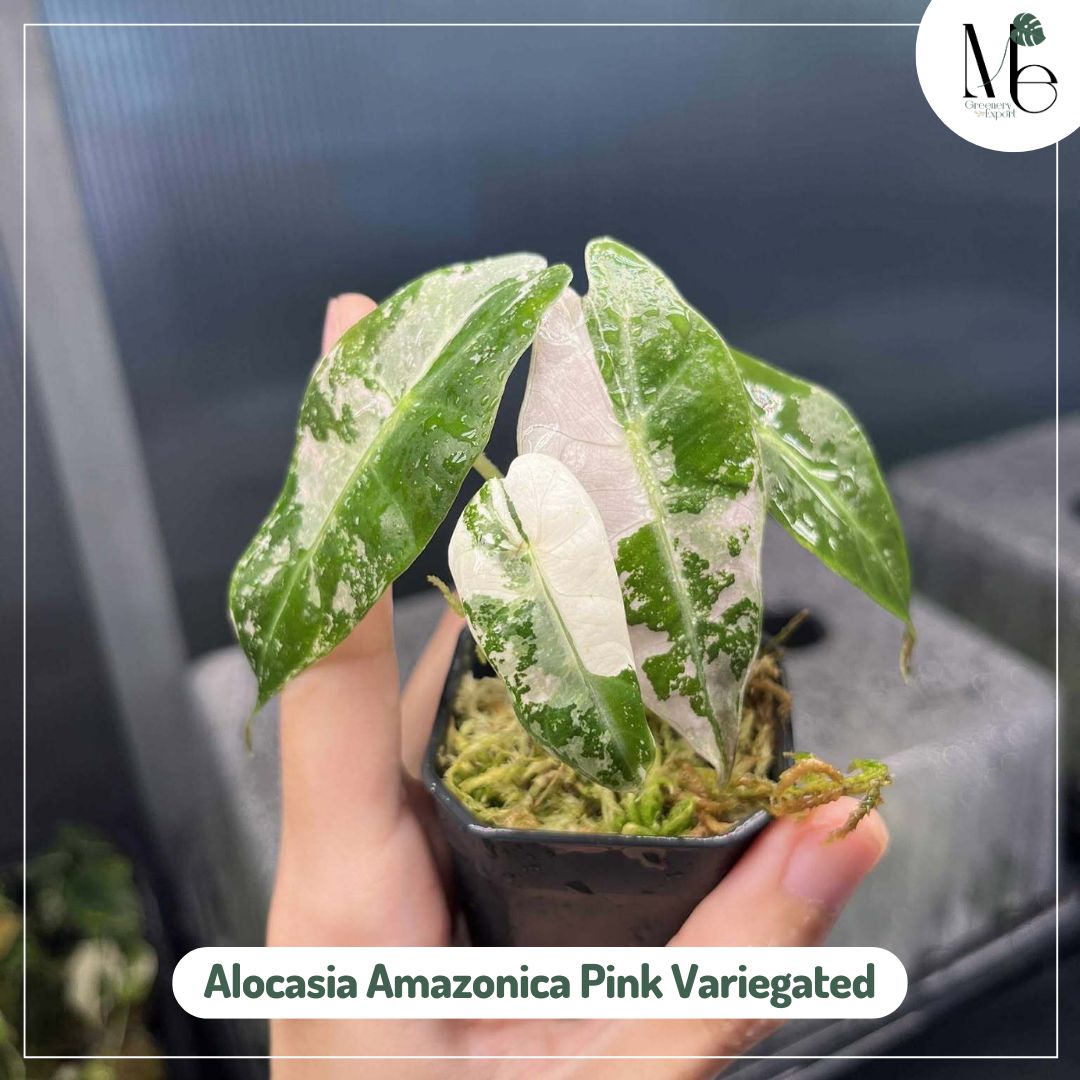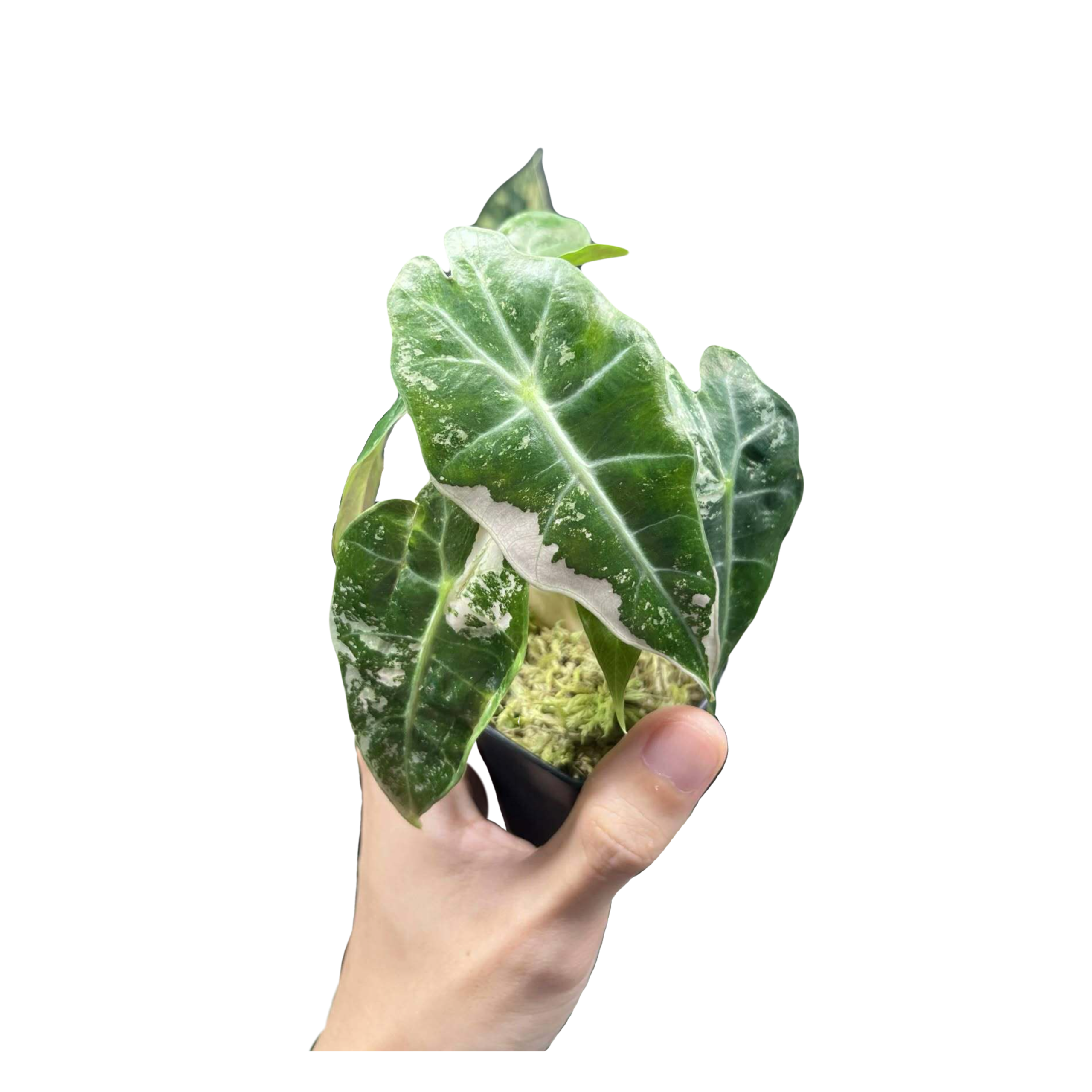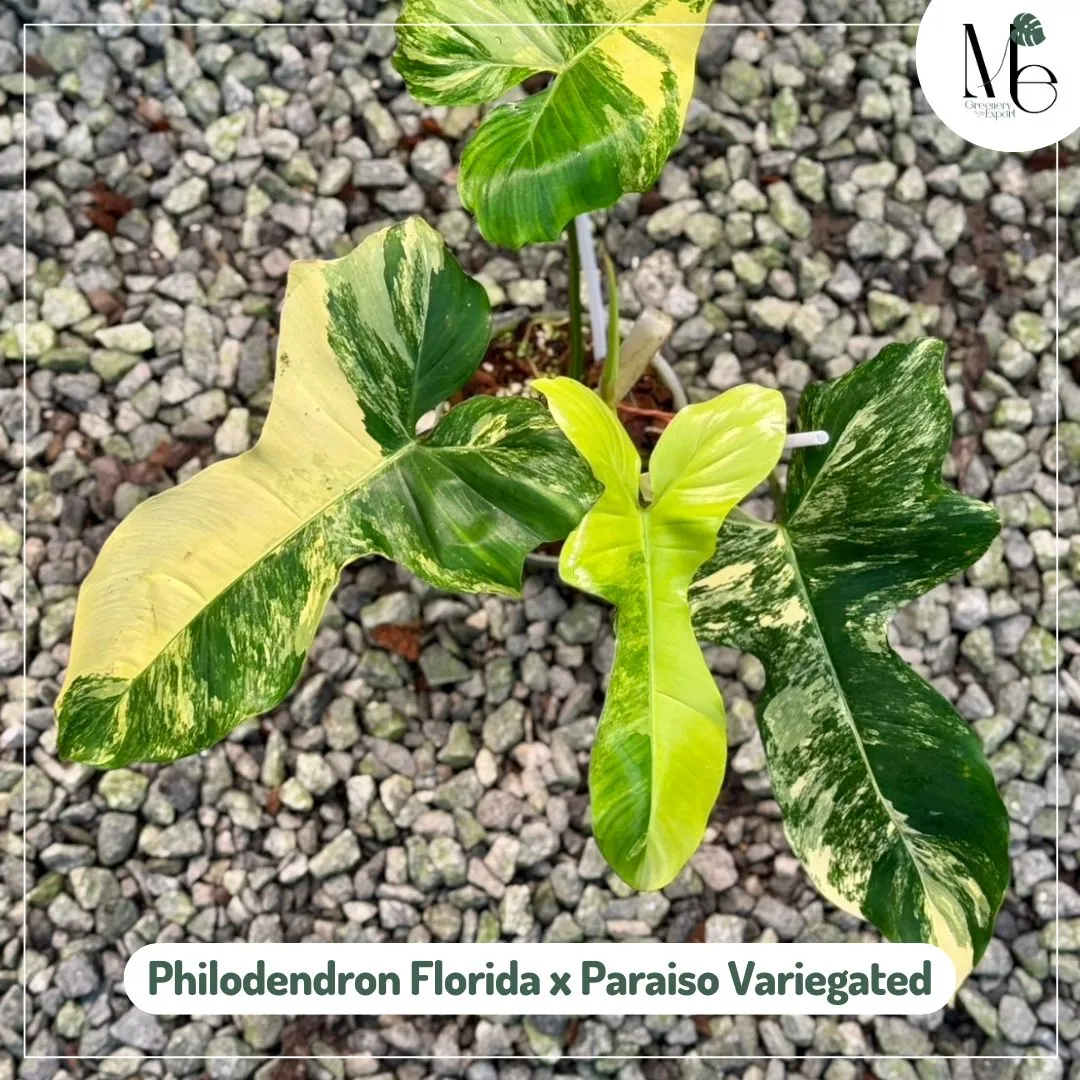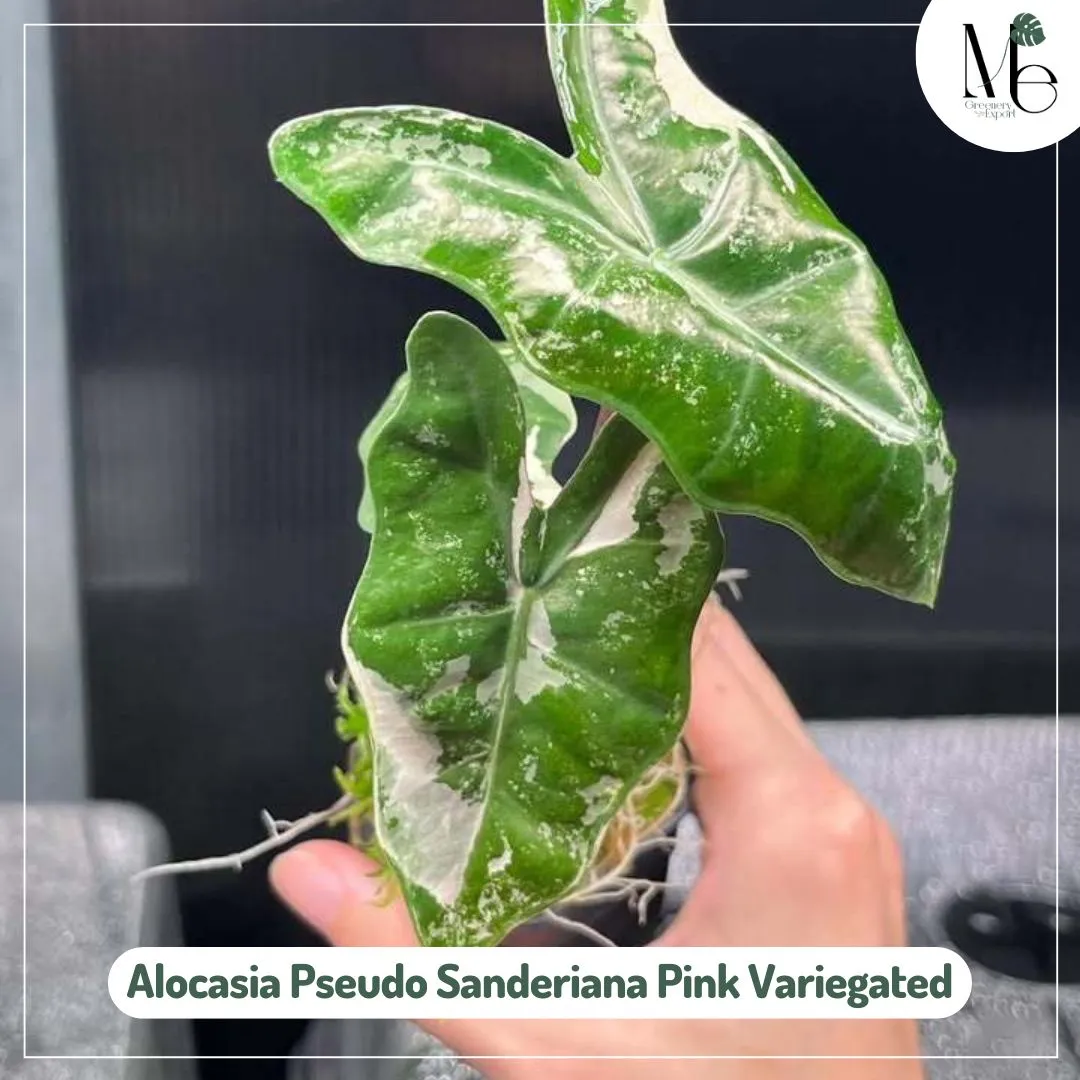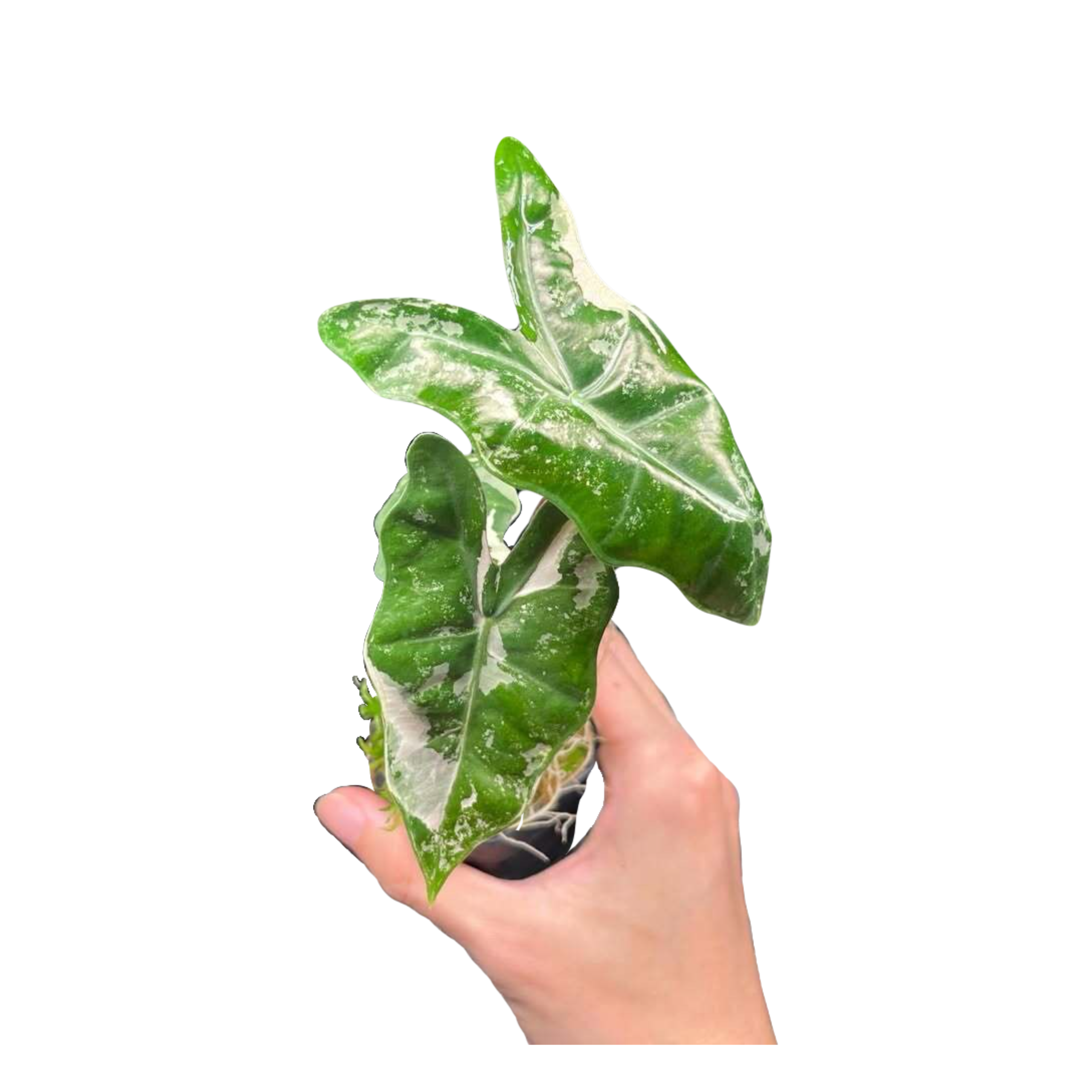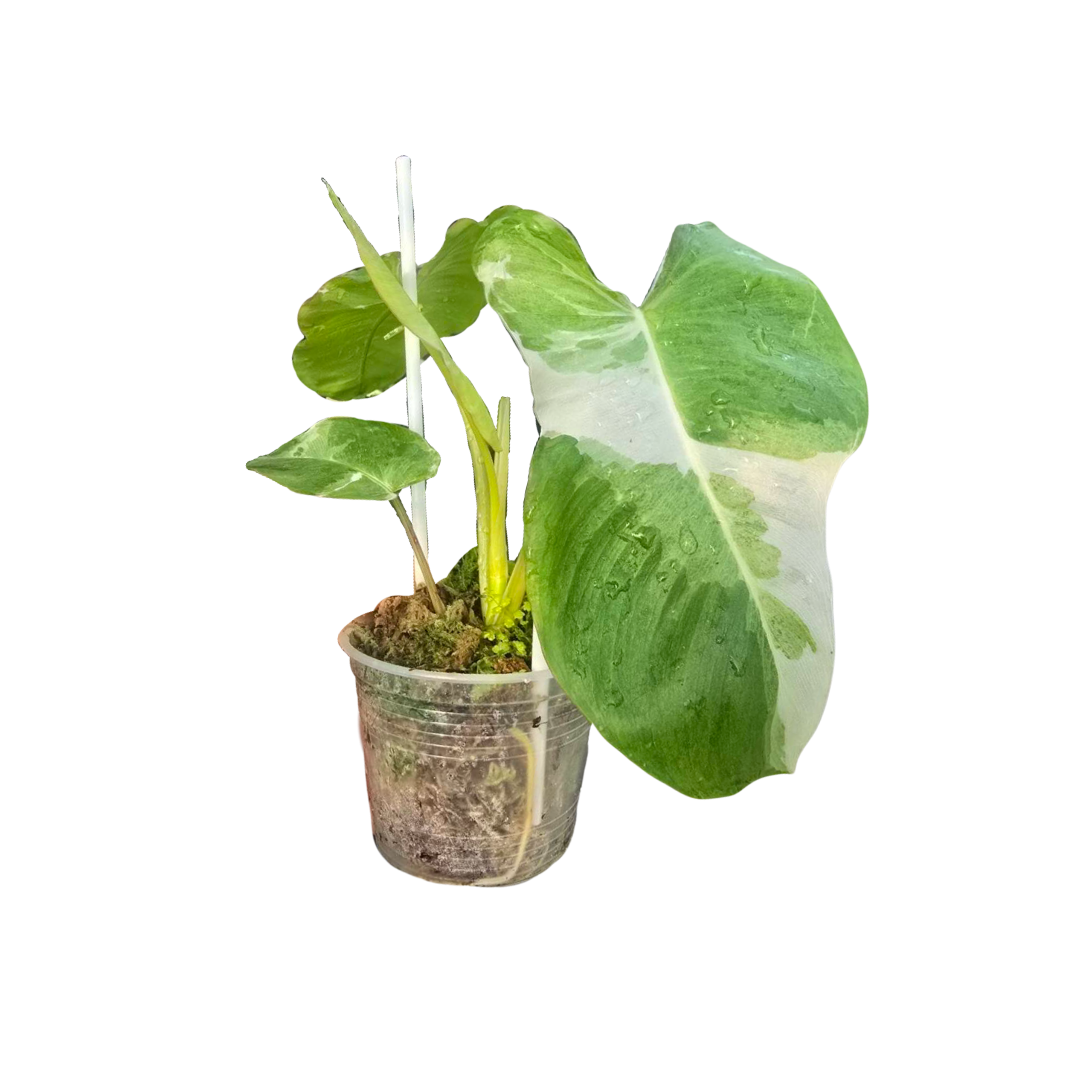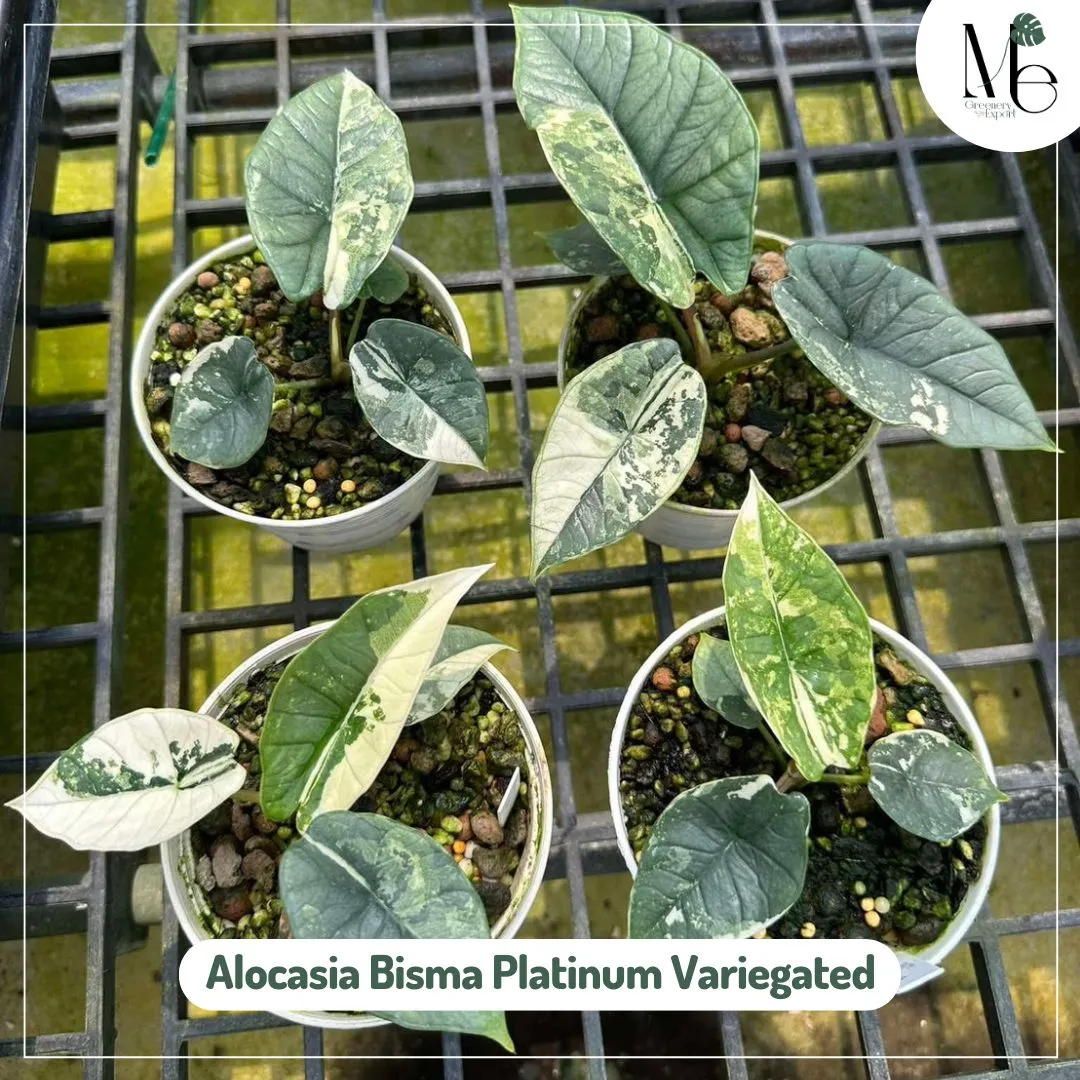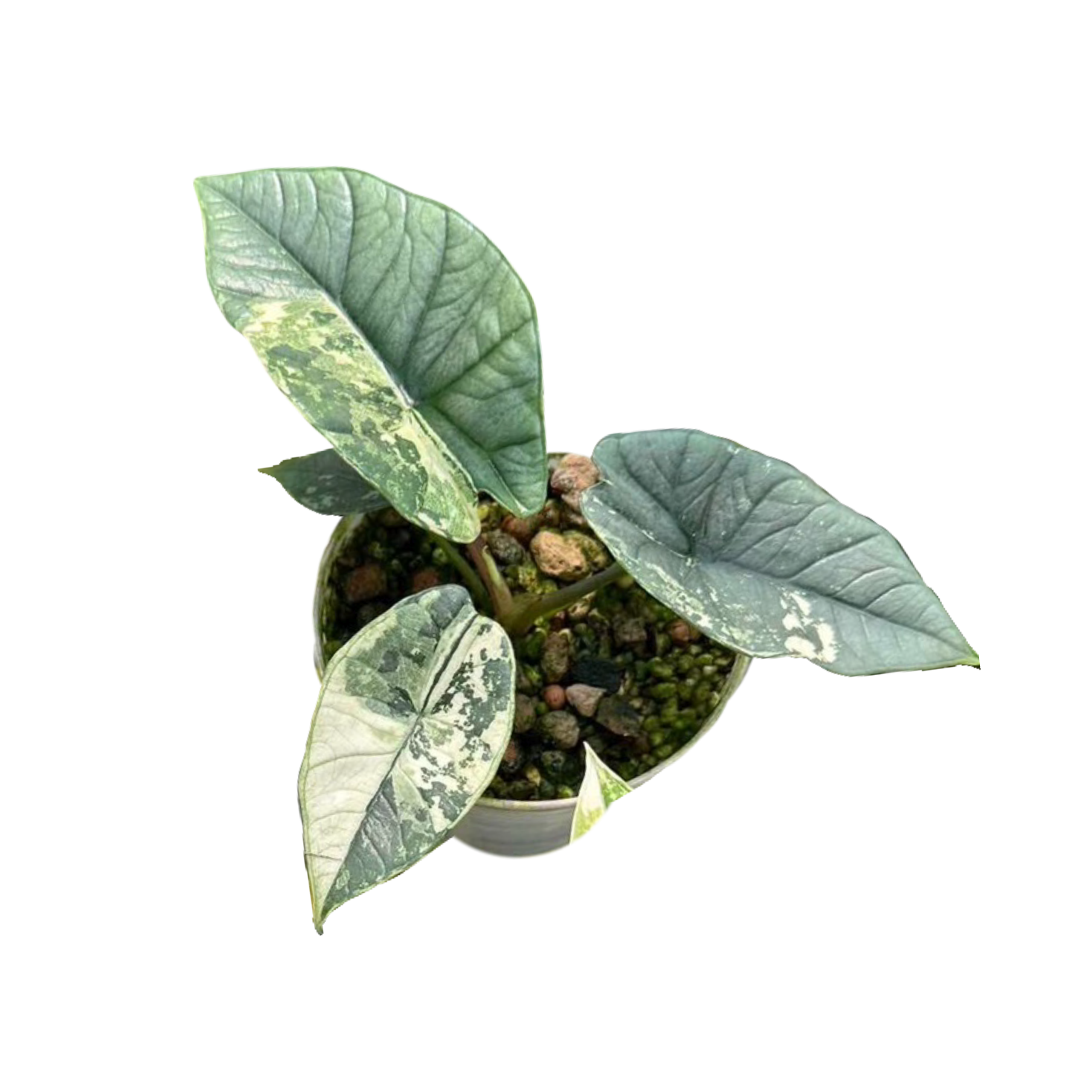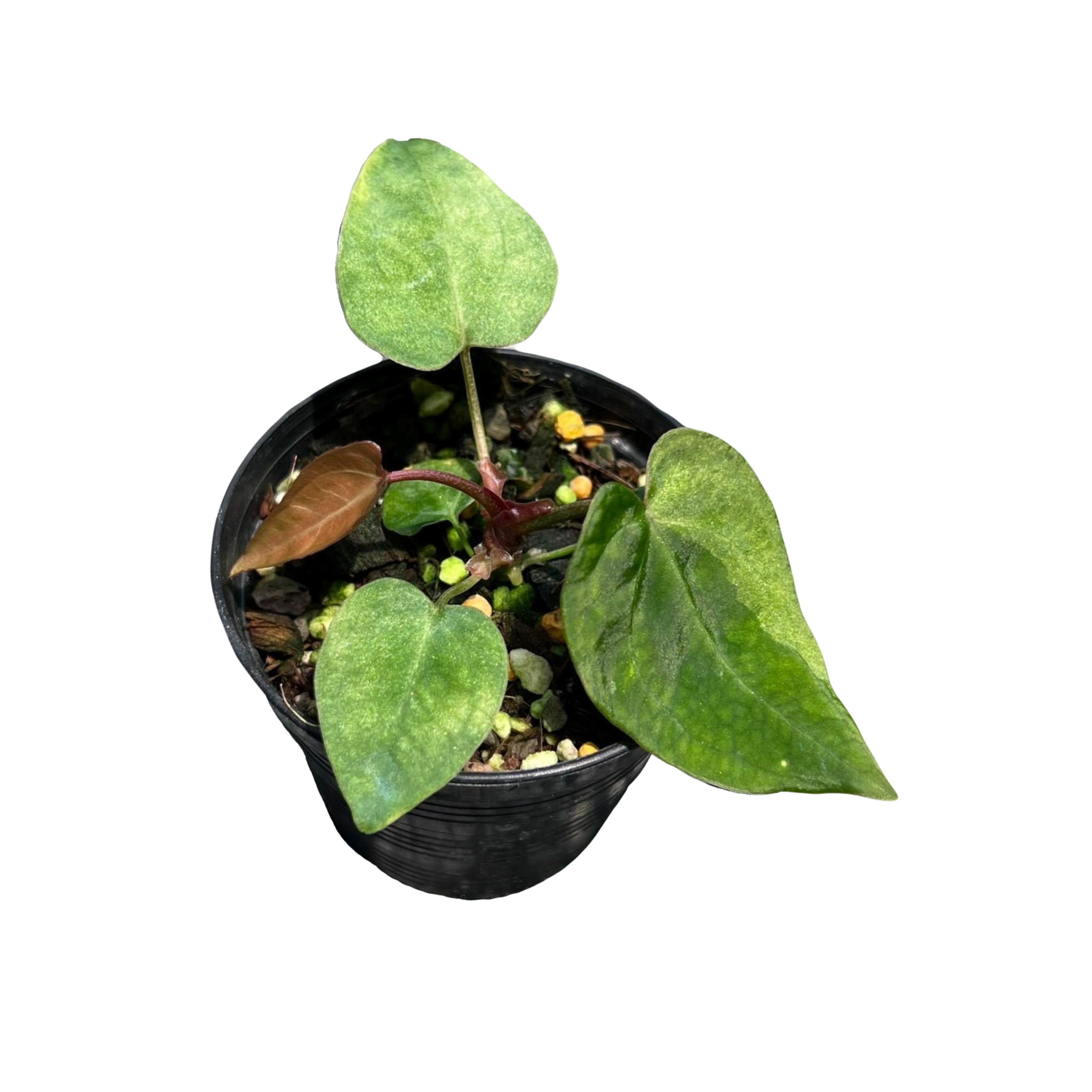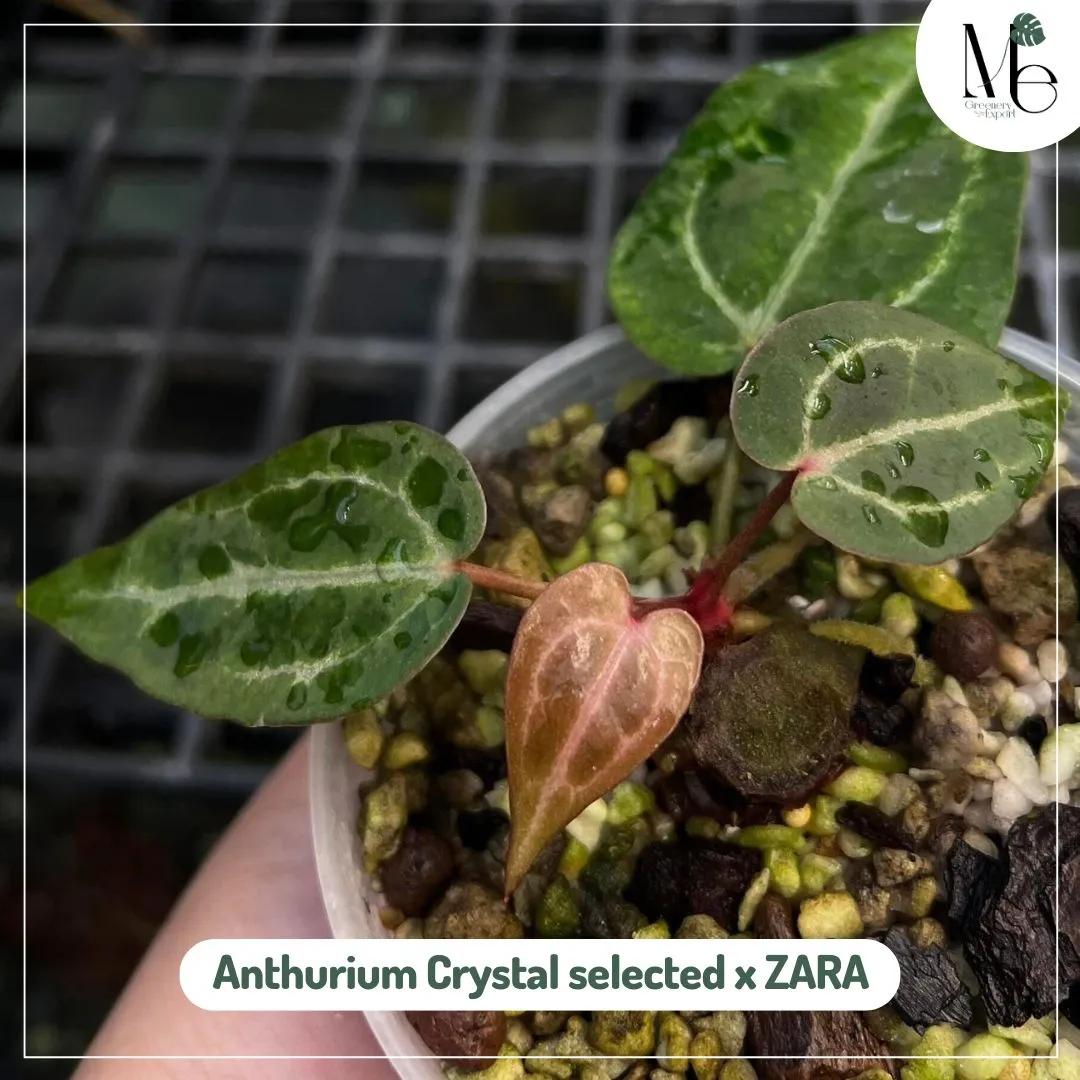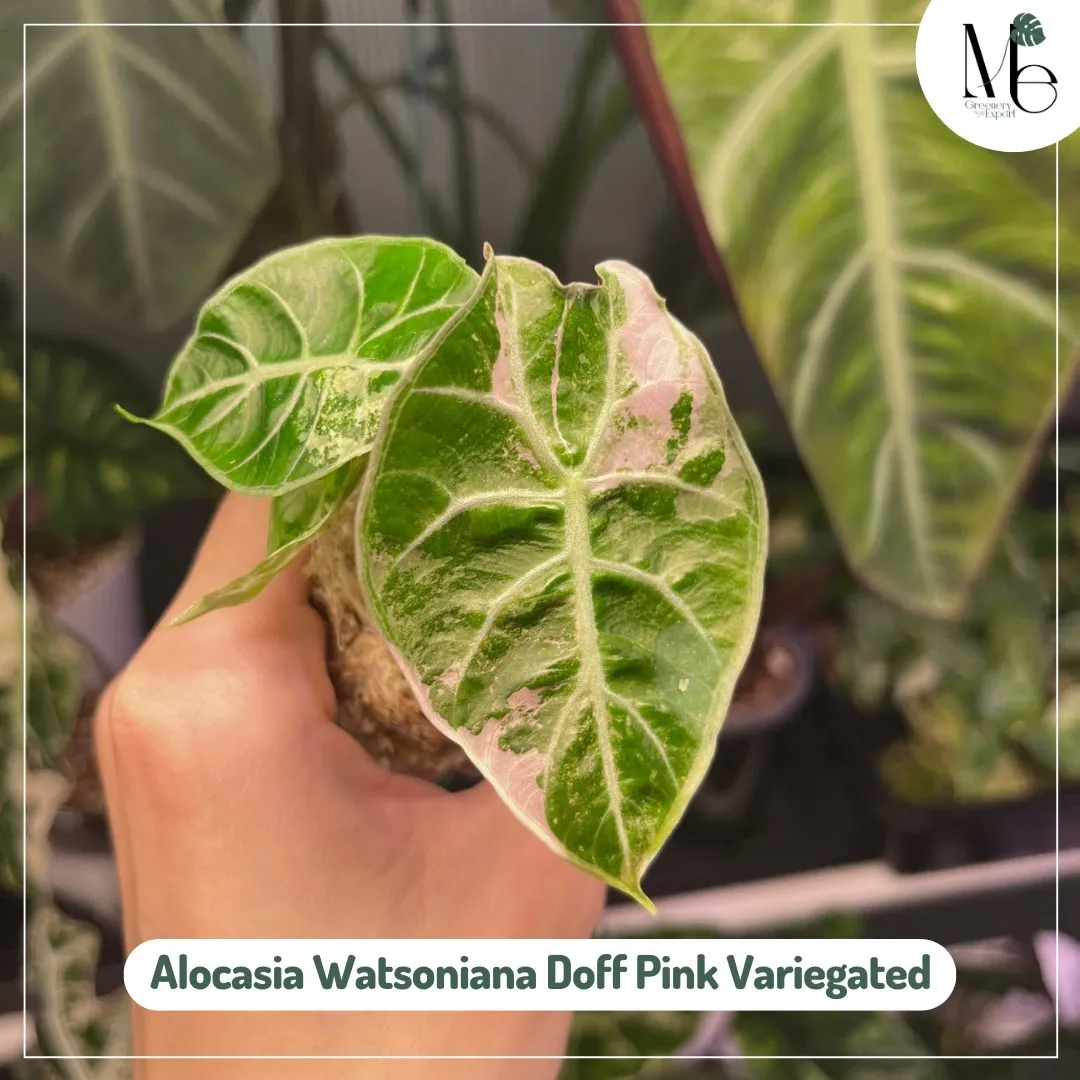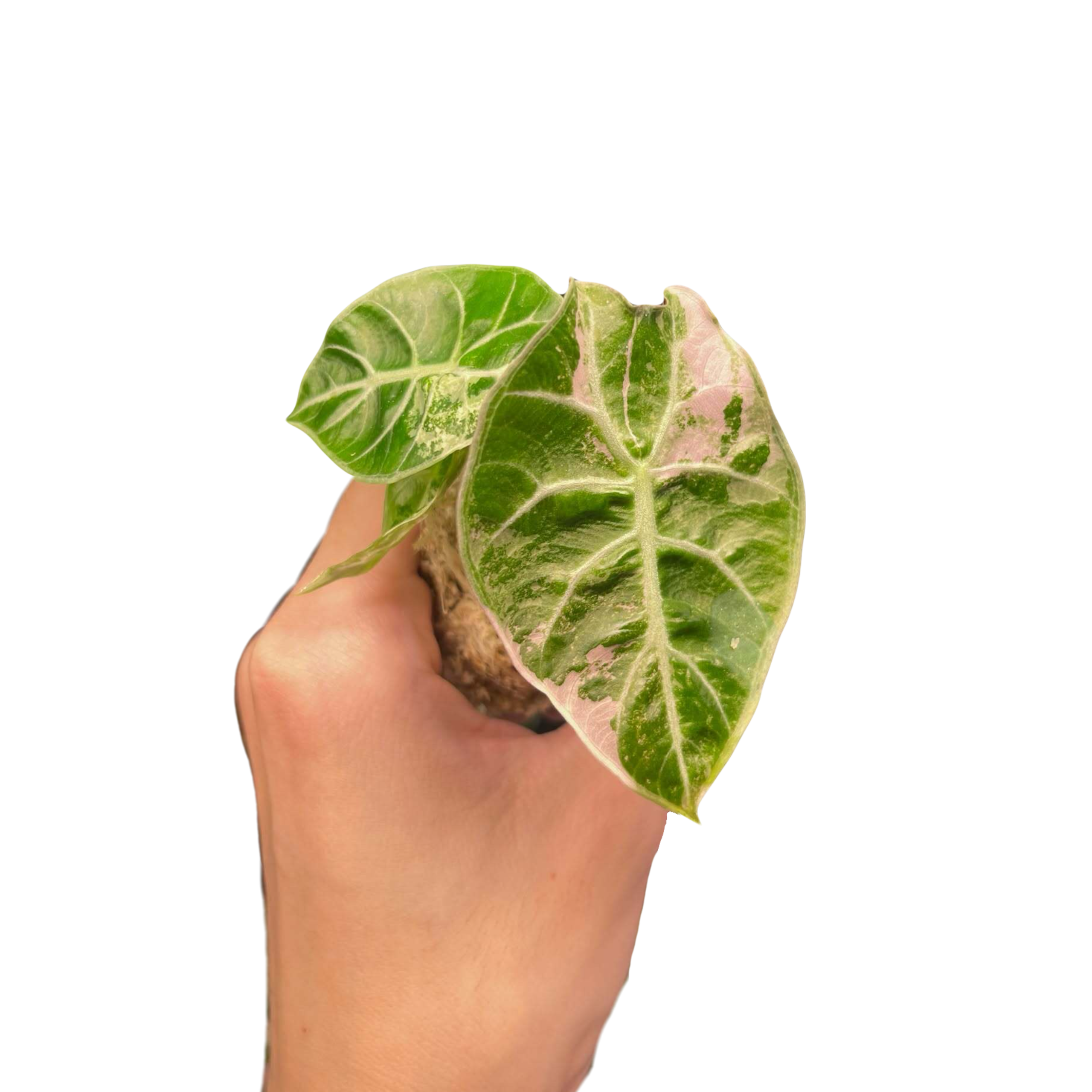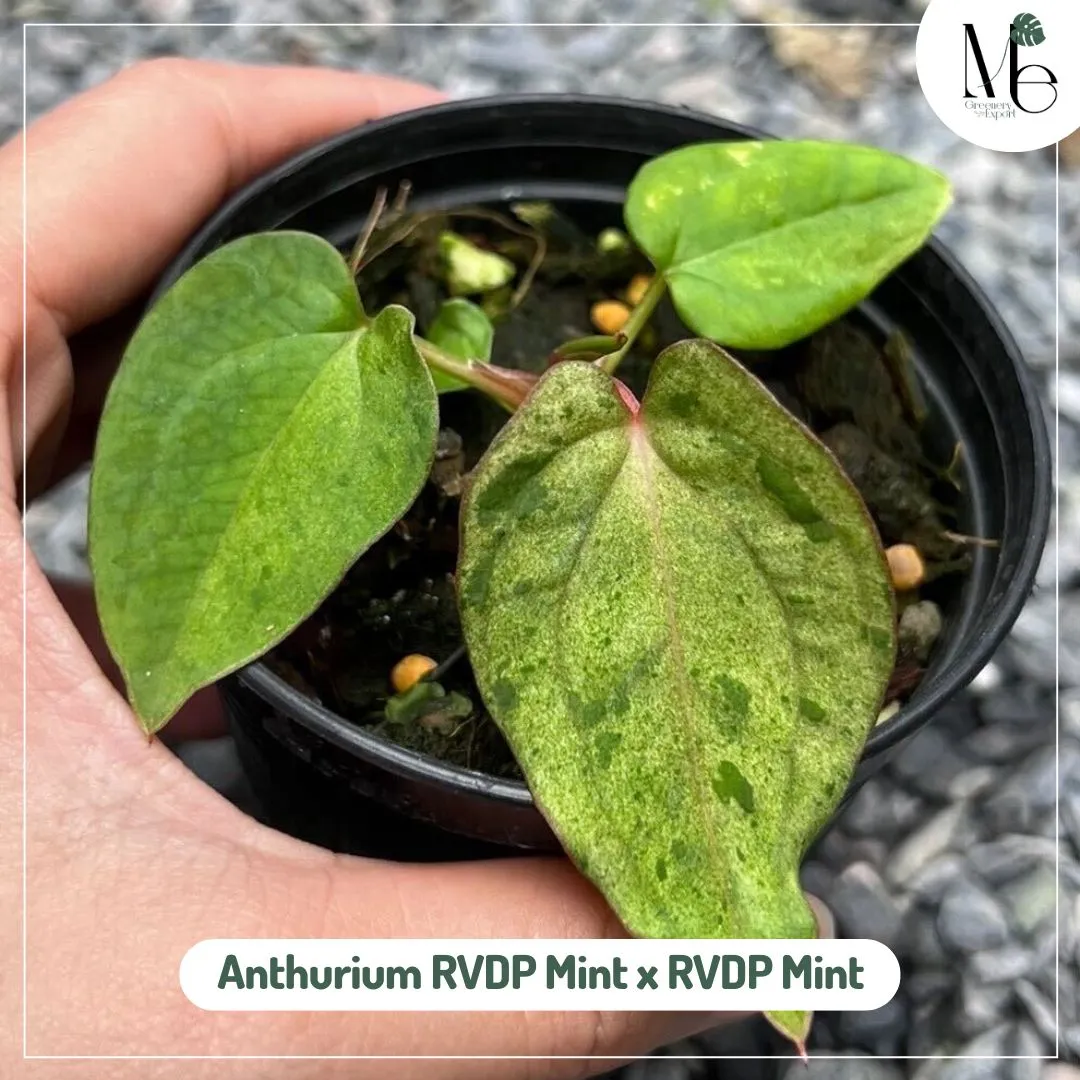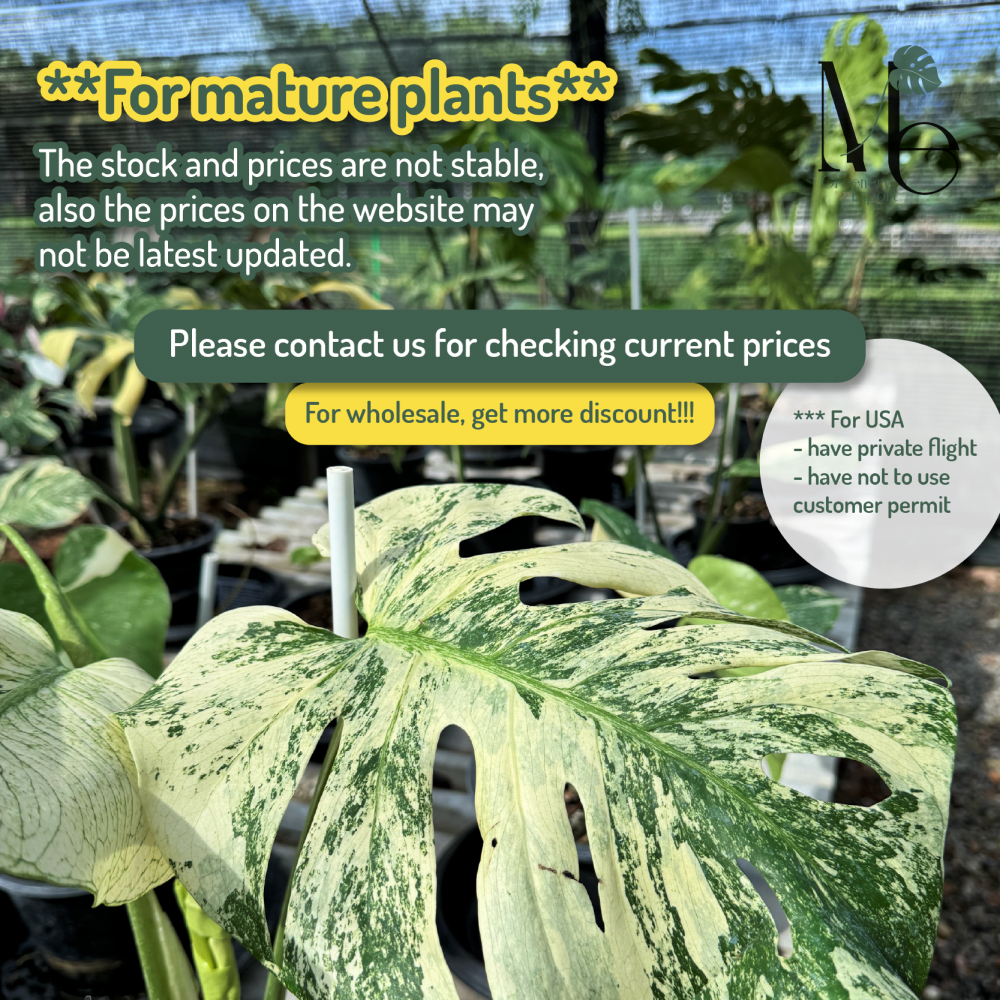Showing 1–20 of 103 resultsSorted by latest
Alocasia Venusta Aurea
The Alocasia Venusta Aurea is a rare and striking tropical plant prized for its dramatic, elongated leaves with bold yellow variegation. A true collector’s gem, this unique variety combines the sleek, arrow-shaped foliage of Alocasia Venusta with eye-catching golden hues that contrast beautifully against deep green. How to care Light: Bright, indirect light is ideal. Avoid direct sunlight, which can scorch the variegated leaves. Water: Keep the soil consistently moist but not soggy. Allow the top inch to dry between waterings. Reduce watering in winter. Humidity: High humidity (60%+) is essential. Use a humidifier or pebble tray if needed. Temperature: Prefers warm temperatures between 65–80°F (18–27°C). Protect from cold drafts and sudden temperature drops. Soil: Use a well-draining, airy mix (e.g., peat, perlite, and orchid bark). How to order *The first image is just for advertising. [post-views]
Share this:
Philodendron Joepii Aurea
The Philodendron Joepii Aurea is a stunning tropical plant known for its striking elongated lance-shaped leaves that boast a vibrant golden-yellow hue. Its foliage can range from bright yellow to warm amber tones, creating a glowing, sunlit effect that instantly brightens any room. The leaves grow upright and have a smooth, glossy texture that enhances their eye-catching appeal. How to care Light: Bright, indirect light (avoid direct sunlight) Water: Water moderately; let the top 1 inch of soil dry out between waterings Humidity: Prefers higher humidity but tolerates average indoor levels Temperature: Ideal range 65-80°F (18-27°C); avoid drafts and sudden changes Soil: Well-draining, airy soil mix How to order *The first image is just for advertising. [post-views]
Share this:
Alocasia Polly Pink Variegated
The Alocasia Polly Pink Variegated is a rare and captivating tropical plant prized for its dramatic arrowhead-shaped leaves and striking pink variegation. Its dark green, glossy foliage is accented with bold white veins and soft pink marbled patterns, creating a vivid contrast that instantly draws the eye. Compact and sculptural, this plant makes a stunning statement piece for shelves, desks, or plant stands. A must-have for collectors and lovers of unique foliage, the Polly Pink Variegated adds a touch of elegance and color to any indoor jungle. How to care Light: Bright, indirect light. Avoid direct sunlight to prevent leaf burn. Water: Keep soil consistently moist but not soggy. Allow the top inch to dry between waterings. Humidity: High humidity is essential. Mist regularly or use a humidifier. Temperature: Prefers warm temps (65–80°F / 18–27°C). Avoid drafts and cold. Soil: Well-draining, airy mix (aroid mix or peat + perlite). How to order *The first image is just for advertising. [post-views]
Share this:
Monstera Lemon Lime
Monstera Lemon Lime is a striking and vibrant tropical houseplant known for its bright, chartreuse-green foliage. While not an officially recognized Monstera variety, it’s often used to describe Monsteras or similar aroids with eye-catching lemon-lime colored leaves. How to care Light: Bright, indirect light is best. Avoid direct sun, which can scorch the leaves. Water: Water when the top 1–2 inches of soil feel dry. Do not let the plant sit in water. Humidity: Prefers moderate to high humidity. Mist occasionally or use a humidifier. Temperature: Thrives in 65–85°F (18–29°C). Keep away from cold drafts. Soil: Well-draining potting mix. Aroid mix with perlite, coco coir, and bark is ideal. How to order *The first image is just for advertising. [post-views]
Share this:
Alocasia Dragon Tooth Aurea
Alocasia Dragon Tooth Aurea is a rare, tropical houseplant prized for its long, narrow, and sharply serrated leaves that resemble dragon teeth. Its striking aurea variegation features vibrant yellow and green marbling, making it a standout in any plant collection. How to care Light: Bright, indirect light. Avoid direct sun, which can burn the leaves Water: Keep soil consistently moist but not soggy. Let top inch dry out slightly. Humidity: Prefers high humidity (60%+). Use a humidifier or pebble tray if needed. Temperature: Warm temps between 65–85°F (18–29°C). Avoid cold drafts or sudden chills. Soil: Use a well-draining aroid mix (e.g., peat, perlite, orchid bark). How to order *The first image is just for advertising. [post-views]
Share this:
Philodendron Firebird
The Philodendron Firebird is a stunning tropical plant known for its vibrant, fiery foliage that blends shades of deep green, copper, and bronze. With its uniquely lobed leaves and compact, upright growth habit, the Firebird adds a bold, exotic touch to any indoor plant collection. Easy to care for and adaptable to various light conditions How to care Light: Thrives in bright, indirect light. Avoid direct sun, which can scorch the leaves. Tolerates lower light but may grow more slowly. Water: Water when the top 1–2 inches of soil feel dry. Do not let it sit in water—ensure good drainage to prevent root rot. Humidity: Prefers moderate to high humidity. Mist occasionally or use a humidifier in drier environments. Temperature: Keep in a warm environment (65–80°F / 18–27°C). Protect from cold drafts and temps below 55°F (13°C). Soil: Use a well-draining potting mix rich in organic matter—an aroid mix or peat-based soil with perlite works well. How to order *The first image is just for advertising. [post-views]
Share this:
Alocasia Watsoniana Aurea
Alocasia Watsoniana Aurea is a rare variegated form of Alocasia Watsoniana, prized for its large, velvety leaves marked by striking white veins and irregular golden-yellow variegation. Its deep green to purplish foliage contrasts beautifully with the bright variegation, giving each leaf a unique and dramatic appearance. Native to Southeast Asia, this plant is slow-growing and not commonly found in cultivation, making it a highly sought-after piece for collectors. The natural variation in its patterns ensures that no two plants are alike, adding to its appeal as a standout specimen in any rare plant collection. How to care Light: Bright, indirect light; avoid direct sun. Water: Keep soil lightly moist; don’t let it stay soggy. Humidity: High humidity (60–80%) is ideal. Temperature: Prefers 18–29°C (65–85°F); avoid cold drafts. Soil: Use a well-draining aroid mix. How to order *The first image is just for advertising. [post-views]
Share this:
Alocasia Cuprea Latte
The Alocasia Cuprea Latte is a variegated form of the classic Cuprea, prized for its warm, earthy elegance. Its leaves carry a soft blend of beige, light brown, and cream that flows gently over a deep green base, creating a smooth, watercolor-like effect. Unlike the “Gold” variety, which displays bold, high-contrast splashes of white, cream, and golden tones, the “Latte” offers a more subdued, harmonious look which is perfect for those who prefer a calmer, more understated style in their foliage. How to care Light: Bright, indirect light. Avoid direct sun, which can burn the leaves Water: Keep soil consistently moist but not soggy. Let top inch dry out slightly. Humidity: Prefers high humidity (60%+). Use a humidifier or pebble tray if needed. Temperature: Warm temps between 65–85°F (18–29°C). Avoid cold drafts or sudden chills. Soil: Use a well-draining aroid mix (e.g., peat, perlite, orchid bark). How to order *The first image is just for advertising. [post-views]
Share this:
Philodendron Red Congo Variegated
The Philodendron Red Congo Variegated is a stunning tropical plant prized for its large, glossy leaves that blend deep burgundy-red hues with striking variegation. Each leaf showcases rich, wine-red tones contrasted by irregular splashes or patches of creamy white and soft pink variegation, making it a truly unique and dynamic specimen. Its upright, robust growth habit adds a powerful architectural element to any indoor garden. How to care Light: Prefers bright, indirect light to maintain vibrant color and variegation. Avoid direct sun to prevent leaf burn. Water: Water when the top inch of soil feels dry. Avoid overwatering to protect roots. Humidity: Enjoys moderate to high humidity levels for best growth and leaf quality. Temperature: Thrives in warm conditions between 65–80°F (18–27°C). Protect from cold drafts. Soil: Use well-draining, airy soil mix with components like perlite or orchid bark. [order_button_social] *The first image is just for advertising. [post-views]
Share this:
Philodendron Red Moon
The Philodendron Red Moon is a unique tropical plant known for its large, heart-shaped leaves that emerge with a stunning deep red or reddish-pink hue. As the leaves mature, they often develop a rich, dark green color with red undersides, creating a dramatic two-tone effect. Its compact, upright growth makes it perfect for indoor spaces where you want a pop of bold color without taking up too much room. How to care Light: Bright, indirect light brings out the best color. Avoid harsh direct sun to prevent leaf burn. Water: Water when the top 1–2 inches of soil dry out. Don’t let it sit in water. Humidity: Prefers moderate to high humidity but tolerates average indoor air. Temperature: Thrives between 65–80°F (18–27°C). Protect from cold drafts. Soil: Use well-draining potting mix with good aeration. How to order *The first image is just for advertising. [post-views]
Share this:
Philodendron Distantilobum Variegated
The Philodendron Distantilobum Variegated is a rare tropical gem known for its uniquely shaped, deeply lobed leaves that create a bold, sculptural look. Each leaf features pronounced cuts, giving it an intricate and textured silhouette unlike most philodendrons. This striking leaf form is paired with beautiful variegation—splashes and patches of creamy white or pale yellow contrast sharply against rich green, making every leaf a one-of-a-kind masterpiece. How to care Light: Bright, indirect light preserves vibrant variegation and healthy leaves; avoid direct sun. Water: Water when the top 1–2 inches of soil are dry; don’t overwater. Humidity: Prefers moderate to high humidity. Temperature: Thrives between 65–80°F (18–27°C); avoid cold drafts. Soil: Use well-draining, airy soil with peat and perlite. How to order *The first image is just for advertising. [post-views]
Share this:
Alocasia Amazonica Pink Variegated
The Alocasia Amazonica Pink Variegated is a striking tropical plant featuring the classic arrow-shaped leaves of the Amazonica, now enhanced with stunning pink variegation. Its dark green leaves are beautifully patterned with splashes and streaks of soft pink, giving the plant a delicate and unique look. The glossy, velvety texture of the leaves adds to its luxurious appeal. How to care Light: Prefers bright, indirect light to maintain vibrant colors and prevent leaf burn. Water: Keep soil consistently moist but not soggy; water when the top inch feels dry. Humidity: Thrives in high humidity; mist regularly or use a humidifier if needed. Temperature: Ideal range is 65–80°F (18–27°C); avoid drafts and sudden temperature changes. Soil: Use a well-draining, airy mix with peat, perlite, and orchid bark. How to order *The first image is just for advertising. [post-views]
Share this:
Philodendron Florida x Paraiso Variegated
The Philodendron Florida x Paraiso Variegated is a stunning hybrid that combines the dramatic foliage of Philodendron Florida with the vibrant variegation of Paraiso Verde. This plant features glossy, deeply lobed leaves marked by striking patterns of creamy white or pale yellow variegation over a rich green base. Its bold texture, sculptural form, and shifting color patterns make it a true standout. Due to its limited availability and unpredictable variegation, it’s considered a rare and highly sought-after plant among collectors. How to care Light: Bright, indirect light is ideal to preserve variegation. Avoid harsh direct sun. Water: Water when the top 1–2 inches of soil are dry. Keep soil moist but not soggy. Humidity: Prefers moderate to high humidity; mist or use a humidifier if needed. Temperature: Thrives in 65–80°F (18–27°C); protect from cold air and drafts. Soil: Well-draining mix with peat, perlite, and orchid bark. How to order *The first image is just for advertising. [post-views]
Share this:
Alocasia Pseudo Sanderiana Pink Variegated
The Alocasia Pseudo Sanderiana Pink Variegated is a rare tropical plant with large, arrow-shaped leaves that have soft pink patches mixed with deep green. The pink areas give the plant a gentle, elegant look, and the leaves often have a smooth, velvety feel that adds to its charm. How to care Light: Needs bright, indirect light. Avoid direct sunlight to protect the leaves. Water: Keep soil lightly moist but not soggy. Water when the top feels dry. Humidity: Prefers high humidity. Mist leaves or use a humidifier if the air is dry. Temperature: Likes warmth between 65–80°F (18–27°C). Keep away from cold drafts. Soil: Use well-draining soil with peat and perlite. How to order *The first image is just for advertising. [post-views]
Share this:
Philodendron Paraiso Verde Albo
The Philodendron Paraiso Verde Albo is a captivating plant known for its stunning contrast of deep green leaves splashed with bright white variegation. Its medium-sized, elongated heart-shaped leaves showcase unique, irregular patches of white that vary from leaf to leaf, creating a dynamic and eye-catching display. With a versatile, semi-climbing growth habit, it adapts well to different indoor spaces and styling preferences. How to care Light: Bright, indirect light helps maintain vibrant variegation without burning leaves. Water: Allow the top 1–2 inches of soil to dry before watering. Avoid overwatering. Humidity: Prefers moderate to high humidity but tolerates average indoor conditions. Temperature: Thrives in temperatures between 65–80°F (18–27°C). Keep away from drafts. Soil: Use a well-draining, airy potting mix with components like perlite or orchid bark. How to order *The first image is just for advertising. [post-views]
Share this:
Alocasia Bisma Platinum Variegated
The Alocasia Bisma Platinum Variegated stands out with its soft, metallic silver-blue leaves that give off a distinctive platinum sheen. Each leaf is accented with bold patches of creamy white albo variegation, creating a high-contrast, eye-catching display. The glossy surface of the foliage reflects light beautifully, adding to its polished, sculptural look. Its upright growth and broad, arrow-shaped leaves with prominent veins give it an architectural presence, making it a true statement piece in any rare plant collection. How to care Light: Bright, indirect light. No harsh sun—variegation can fade or scorch. Water: Keep soil evenly moist. Let the top inch dry out between waterings. Humidity: 60–80%. Loves humidity. Use a pebble tray or humidifier if needed. Temperature: 65–80°F (18–27°C). No drafts, no cold nights. Soil: Loose & chunky. Mix of potting soil, orchid bark, and perlite is best. How to order *The first image is just for advertising. [post-views]
Share this:
Anthurium RVDP Mint x Papillilaminum Variegated
The Anthurium RVDP Mint x Papillilaminum Variegated is a rare and captivating hybrid that combines the striking features of the Red Vein Dark Phoenix (RVDP) Mint and the elegant Papillilaminum. This unique cross results in a plant that showcases the best attributes of both parent plants, making it a prized addition to any collection. How to care Light: Provide bright, indirect light. Direct sunlight can scorch the leaves. Watering: Keep the soil consistently moist but not waterlogged. Water when the top inch of soil is dry. Humidity: Requires high humidity levels (60–80%). Use a humidifier or mist the plant regularly. Temperature: Ideal temperatures range from 65°F to 80°F (18°C to 27°C). Protect from cold drafts. Soil: Use a well-draining mix, such as orchid bark, perlite, and peat moss.
How to order *The first image is just for advertising. [post-views]Share this:
Anthurium Crystal selected x ZARA
This unique hybrid, Anthurium Crystal selected x ZARA, is a refined cross between two of the most admired aroids in the collector world: the velvet-leafed Anthurium crystallinum and the richly veined Anthurium ZARA. The result is a striking plant that combines the best of both lineages—luxurious texture, sculptural form, and dramatic visual contrast. How to care Light: Bright, indirect light for optimal coloration and growth. Watering: Keep soil evenly moist but not soggy. Allow top inch to dry between waterings. Humidity: Prefers high humidity (60%+); consider a humidifier or greenhouse environment. Temperature: Ideal temperatures range from 65°F to 80°F (18°C to 27°C). Protect from cold drafts. Soil: Well-draining, airy mix (orchid bark, perlite, sphagnum moss).
How to order *The first image is just for advertising. [post-views]Share this:
Alocasia Watsoniana Doff Pink Variegated
The Alocasia Watsoniana Doff Pink Variegated is a rare and captivating variety of Alocasia known for its bold foliage and distinctive variegation. This particular variant stands out not just for its pink and green color contrast, but also for the unique velvety texture of its leaves, which is what the term “Doff” refers to. In this context, “Doff” is used to indicate a soft, matte, or velvety leaf surface, as opposed to the more common glossy or waxy textures found in other Alocasia types. How to care Light: Bright, indirect light. Avoid direct sun to protect the velvety leaves. Water: Keep soil slightly moist; avoid soggy roots. Humidity: Loves high humidity (60–80%). Temperature: Warm, tropical range—65–85°F (18–29°C). Soil: Fast-draining mix (e.g., perlite, orchid bark, and sphagnum moss). How to order *The first image is just for advertising. [post-views]
Share this:
Anthurium RVDP Mint x RVDP Mint
The Anthurium RVDP Mint x RVDP Mint is a refined cross between two Red Vein Dark Phoenix (RVDP) parents that both carry rare mint variegation, making this hybrid exceptionally unique. This plant doesn’t just turn heads — it practically glows. With its soft, minty green tones, intricate veining, and luxurious velvet leaves, it’s a must-have for serious aroid collectors. How to care Light: Bright, filtered light; no harsh direct sun Watering: Water when topsoil feels slightly dry; avoid soggy roots Humidity: 70%+ is ideal — use a pebble tray or humidifier Temperature: Prefers warmth (65–85°F / 18–29°C) Soil: Chunky, breathable mix (orchid bark, perlite, coco coir)
How to order *The first image is just for advertising. [post-views]Share this:
Showing 1–20 of 103 resultsSorted by latest

